














1250 Bellflower Blvd., LA4-203 Long Beach, CA, 90804
Phone (562) 985-8000
El Nicklin
Sam Farfán
Acsah Lemma
Editorial Office Director of Business Operations Managing Editor Editor in Chief Community Engagement Editor
Linsey Towles
Multimedia Managing Editor business@gobeach.media managing@lbcurrent.com eic@lbcurrent.com community@lbcurrent.com multimedia@lbcurrent.com
Kristina Agresta
Editors
Juan Calvillo News Editor news@lbcurrent.com
Julia Goldman Arts & Life Editor arts@lbcurrent.com
Joannah Clemente Opinions Editor opinions@lbcurrent.com
Davis Ramage Sports Editor sports@lbcurrent.com
Jaylyn Preslicka Solutions Editor solutions@lbcurrent.com
Luis Castilla Design Editor design@lbcurrent.com
Khoury Williams Copy Editor
Samuel Chacko Photo Editor
Jazmyn De Jesus Social Media Editor
Dante Estrada Video Editor
Aidan Swanepoel Podcast Editor
copy@lbcurrent.com photo@lbcurrent.com socials@lbcurrent.com video@lbcurrent.com podcast@lbcurrent.com
Photo credit: LAUREN BENSON / Long Beach Current
The Long Beach Honeys, a Long Beach State dance team, performed during half-time of the men’s basketball game against UC Santa Barbara in celebration of Black History Month on Feb. 22.
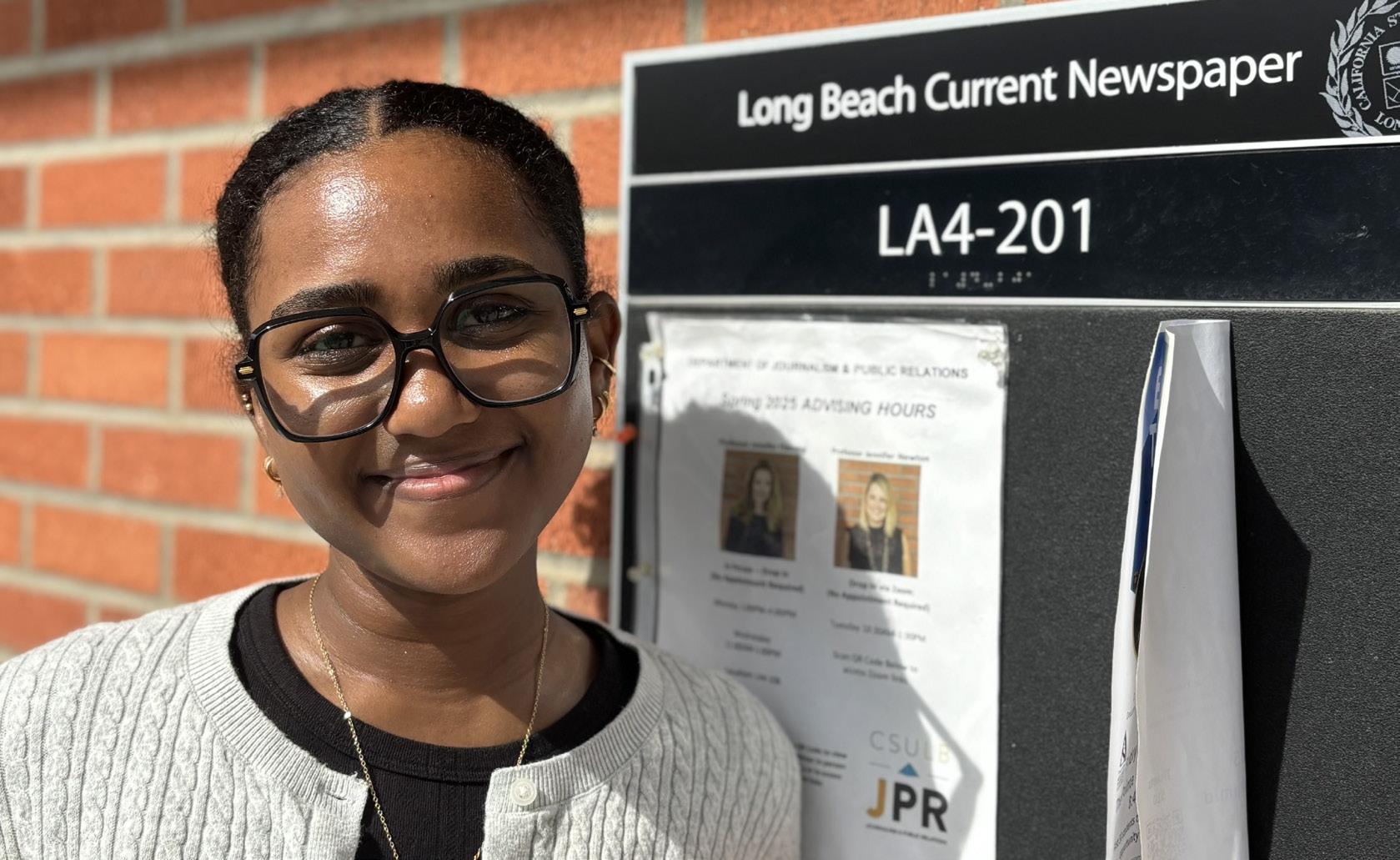
News Assistants Ethan Cohen
Annette Quijada
Christopher Canche Chan
Mayra Salazar
Nasai Rivas
Arts & Life Assistants Delfino Camacho
Grace Lawson
Diego Renteria
Opinions Assistants Lizbeth Cortes-Gutierrez
Sports Assistants
Romi Mathews
Christine Nader
Matthew Coleman
Alyssa De La Cruz
Matthew Gomez
Jack Haslett
Soleil Cardenas Design Assistants
Angela Osorio
Timothy Hessen Copy Assistants
Photo Assistants
Bella Garcia
Lauren Benson
Justin Enriquez
Devin Malast
Mark Siquig
Social Media Assistants Igor Colonno Selestino
Andrew Miller
Video Assistants Eduardo Contreras Jr.
Skylar Stock
Gianna Echeverria Podcast Assistants
Alexandra Gryciuk
BusinEss
Thank you for picking up a copy of the Long Beach Current’s newest print issue. As one of the first Black female Editors-in-Chief of the publication, this issue is near and dear to my heart.
My parents are immigrants from Ethiopia, and although we are racially Black, my family never really considered themselves to be Black. I was told that I am Ethiopian first, with a rich culture and history to be proud of. It wasn’t until I began to inch out of my bubble of homogeneity and spend time with other people that I realized just how wrong those notions were.
To be Black means to persevere, to - despite the challenges - create and define the world around us, never receiving the deserved honor or credit.
It was my Black brothers and sisters who helped me to love my brown skin and curly hair. It was my Black brothers and sisters who welcomed me into their culture, continuously making space for me and others even when they seldom receive the same treatment.
I look at the mirror and love who I am, excited for who I will be, because of this community that fought so I wouldn’t have to. Now, it’s time we celebrate them.
land acknowlEdgmEnt
Here at the Long Beach Current we acknowledge that the school we report on is located on the sacred site of Puvungna, “the gathering place”. We are on the land of the Tongva/ Gabrieleño and the Acjachemen/Juaneño Nations who have lived and continue to live here.
We also acknowledge the Gabrieleño/Tongva (pronounced: GABRIEL-EN-YO/TONG – VAH) and Acjachamen/Juaneño (pronounced: AH-HACH-AH-MEN/JUAN-EN-YO) as the traditional custodians of the Los Angeles region along with the Chumash (pronounced: CHOO-MOSH) to the north and west, and the Tataviam (pronounced: TAH-TAH-VEE-YUM) and Cahuilla (pronounced: KAH-WEE-YAH) Nations to the east.
Andrea Contreras Advertising Manager advertising@gobeach.media
Jennix Bien Creative Director
Web & Technology Director
Leila Nuñez
web@gobeach.media creative@gobeach.media
Nicollette Combre PR & Marketing Manager
Joseph Vargas Distribution Manager
assistants advisErs
Madison Yang distribution@gobeach.media beach.pr@gobeach.media
Gary Metzker Design Adviser
Barbara Kingsley-Wilson Content Adviser
Jennifer Newton Advertising & Business Adviser
We respect and value the many ways the Tongva/Acjachemen cultural heritage and beliefs continue to have significance to the living people and remind us about the sacred and spiritual relationship that has always existed here at what we now call California State University Long Beach.
Editorials: All opinions expressed in the columns, letters and cartoons in the issue are those of the writers or artists. The opinons of the Long Beach Current are expressed only in unsigned editorials and do not necessarily reflect the opinions of the journalism department or the views of all staff members. All such editorials are written by the editorial board of the Long Beach Current.
Monday, February 24, 2025
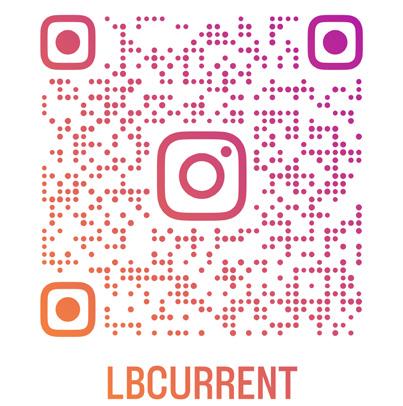
lEttEr Policy: All letters and emails must bear the phone number of the writer and must be no more than 300 words. The Long Beach Current reserves the right to edit letters for publication in regard to space.
BY ANETTE QUIJADA News Assistant
California State University student assistants are negotiating a contract with the CSU to improve their working conditions.
As of Nov. 1, 2024, the bargaining team has secured:
• Grievance procedure
• Bereavement leave (2 paid days, 3 unpaid days)
• Standardized evaluation processes
• Some amount of paid sick time
The bargaining team is still actively working on finalizing their contract.
After voting to join the California State University Employees Union in February 2024, student assistants began meeting with CSU management to bargain for their first contract.
The CSUEU introduced the Unit 15 Sunshine Proposal to the CSU back in 2024. In the proposal, student workers demanded:
• Higher wages that reflect their work value and the cost of living
• An end to unpaid labor and that they be paid every hour they work
• Sick and holiday pay
• A reduction or elimination of parking fees
• For the CSU to follow labor protections including paid training hours overtime and paid travel time
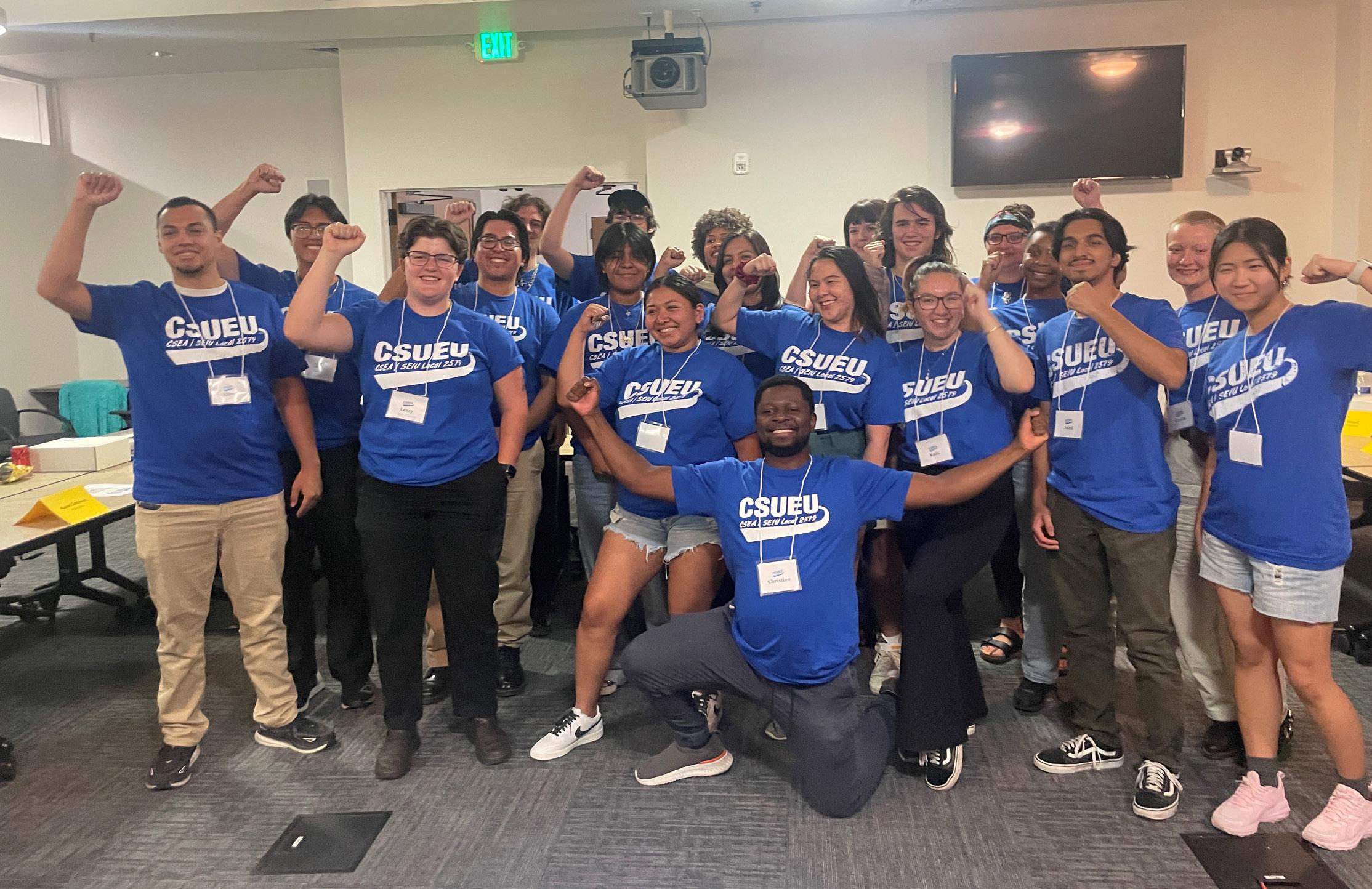
The CSUEU has a bargaining team made up of nine student assistants and a lead negotiator who meets with CSU management.
Catherine Hutchinson, president of the CSUEU, said that for some time CSU began using students to replace employees when they realized it was cheaper than replacing faculty.
Hutchinson, a former student assistant, said nothing has changed in the past 20 years.
“Students realized that they were sitting next to an employee and doing the same job, but having way less benefits and income,” Hutchinson said. “[The students] reached out to us because they realized they were being exploited by the CSU.”
Hutchinson said they have also worked to prevent unfair discipline of workers, as student workers have been fired for following a rule they were told to follow, without a process for students to be able to argue their case.
According to the CSU student employment page, students are permitted to work 20 hours a week while courses are in session and 40 hours a week during recess periods.
Students are not allowed to work overtime, and the Chancellor’s office is required to give permission for hours beyond those permitted.
Hutchinson said the most challeng-
ing part of the bargaining has been getting the CSU to agree on pay.
Student workers are being paid the state minimum instead of the minimum in their cities or counties. As of January 2025, the minimum wage in California is $16.50.
Hutchinson said the reason for CSU being hard on pay, even for staff, is because they do not manage their budget well.
“[CSU] don’t advocate properly for money from the state. The union will fight hard to get the CSU fully funded and when we look, the CSU is not standing there all the time with us. They just take what the state gives them,” Hutchinson said.
Aleyah Thomas-Bowman, a sophomore majoring in psychology, is also a CSUEU student organizer on campus.
Thomas-Bowman was a student assistant for the Office of the Dean at the College of Business until May 2024.
She said during her time as a student assistant, she was getting paid $16 an hour and during the spring of last year, her hours were cut to eight hours a week.
“More than 50% of the time, while working for the office of the dean, I found myself wanting to ask for more. For example, I remember being really sick and I went into the office because I needed that money,” Thomas-Bowman said.
As a CSUEU student organizer on campus, Thomas-Bowman helps student assistants who may run into issues with their employer; she is able to connect students with higher ups in the union. Kaily Brooks is a sophomore at San Diego State University, and is currently on the bargaining team for student assistants.
Back in 2023 when Brooks was a freshman, she was working at a 24-hour desk at one of the SDSU freshman dorm buildings.
She said a red flag she noticed was the overnight pay not being comparable for the task assigned. While the minimum wage in the City of San Diego is $17.25, Brooks is only making the state minimum wage.
“It’s disappointing because minimum wage doesn’t even help us pay our bills, get groceries and gas. We have so many student assistants, especially on our campus that are worried about homelessness, they’re worried about making rent, they’re worried about getting food on their table, gas in their car,” she said.
Brooks said she feels a mix of emotions being able to create change within the CSU.
“I have loved this opportunity to create change not just for me…it’s about creating a better college system for everyone at the CSU,” Brooks said.

BY ELIZABETH CARROLL Contributor
Lives changed for thousands of citizens during the chaos and mass destruction of the Los Angeles fires in early January. One man, now a hometown hero, did everything in his power to save the little normalcy he could.
On Jan. 7, James Lievense, 20, found himself facing the harsh reality that the Eaton fires were approaching closer to his family home. Without hesitation, the third-year kinesiology student decided that it was his duty to try and save the neighborhood he and his family grew up in.
“James took the initiative upon himself,” said his father and Los Angeles Fire Department Captain Daniel Lievense. “Being his dad, that was one of my
proudest moments.”
James, alongside his father and uncle, LAFD Engineer Matthew Lievense, saved a total of 15 houses spanning across Lewis Avenue and Morada Place, including Lievense’s childhood home and his grandmother’s house directly next door.
“I never thought that my first time fighting fire with them would be at my own house,” James said, reminiscing on fond memories of the fire station and his desire to pursue a career in the fire service. “I was somewhat familiar with how to use [the equipment], but at the end of the day, I was just following their instructions.”
As the flames quickly approached the houses, with bright, orange embers traveling quickly through the smokefilled air, James made the decision to stay awake while his family slept to monitor the fires and prepare for the worst.
At 4:30 a.m. on Jan. 8, Los Angeles sheriffs drove down Lewis Avenue and began to inform residents of their immi-
nent evacuation.
“He made a decision to call me [for help], and not just run away,” Matthew Lievense said.
The race to save the homes began.
Capt. Lievense said his son’s composure remained calm and level-headed, taking the precautionary measures of evacuating his family and getting prepared to leave himself in the case of an emergency.
Once his uncle arrived, the two drove to the local fire department, borrowed 500 feet of fire hose, and began defending the neighborhood.
His father arrived moments later, coming from the Hurst Fire, and the three continued to work.
“I’m not trying to be the big guy, but hey I’m going to give them orders and this is going to be a dangerous situation, but never once did James or my brother question it,” Capt. Lievense said. “James was willing throughout the whole fire fight to go, ‘Hey Dad, what’s next?’”
After a grueling eight hours of consistent firefighting, the men had saved their two childhood homes and 13 neighbors’ homes around them.
“I have so much to be thankful for,” said Bert Jacklitch, neighbor of the Lievense families. “Not the least of which are my heroic neighbors who put themselves at risk to save our homes.”
While a real-world experience without training may have scared off others, James said that he is more excited than ever to finish his training to become a firefighter and save other communities affected by fires and natural disasters just like his own.
“He’s my son, I know him as loving and caring,” Capt. Lievense said. “After these fires, it has really led me to believe that he’s more capable of putting the other fellow first.”
His father said, “That’s why I think he wants to choose the fire service as a career, and I think he will make a great member.”
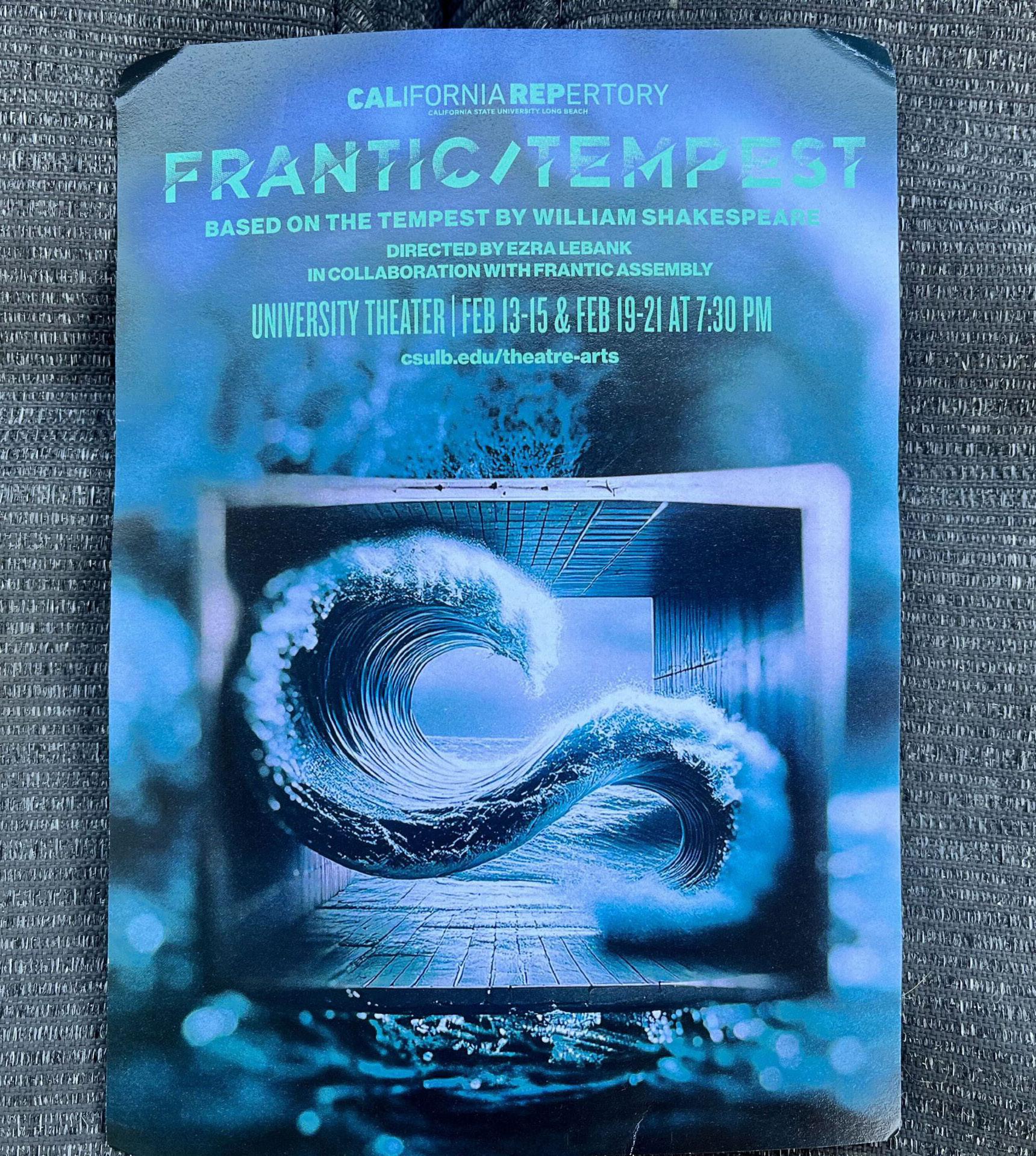
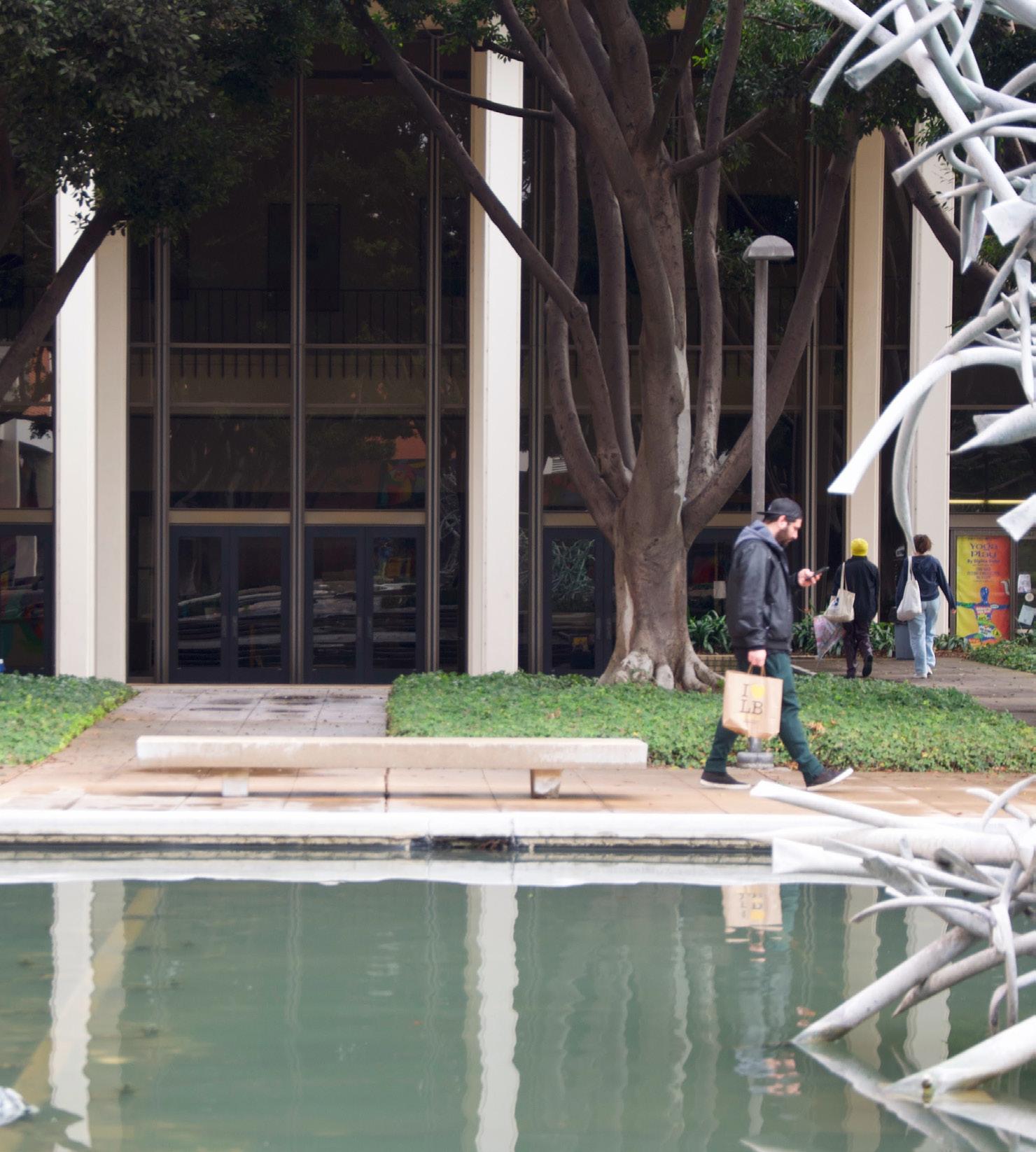
BY NASAI RIVAS News Assistant
Art students are voicing frustration after the Long Beach State Department of Theater Arts allegedly used artificial intelligence to create promotional material for a campus play.
The posters were made to promote “Frantic Tempest,” a modern-day adaptation of William Shakespeare’s play, “The Tempest.”
Fourth-year student Sarah Keilman, 21, finds the use of AI in promotional materials “sad” and “disappointing.”
“It’s kind of like when your dad tells you I’m not mad, I’m disappointed,” Keilman said.
A technical theater major, Keilman heard about it from a student assistant friend who helped put up the posters. She said they looked “bad,” after seeing them herself.
“I was like, Oh…it’s very obvious that it is made by AI,” Keilman said.
She said that posters are people’s first impression of a show so “to make a piece of AI or AI art the face of your show, it sucks.”
“That should not represent what the show is about,” Keilman said.
The play’s last show was on Friday, Feb. 21, with the first show taking place on Feb. 13. It was directed by Ezra LeBank, chair of the theater arts department and the California Repertory of CSULB.
The Current reached out to LeBank about whether or not AI was on the posters. LeBank responded in an email that College of Fine Arts Graphic Designer
Jonathan Torres created the posters.
The Current attempted to contact Torres. Instead, the Communications and Events Coordinator for the College of the Arts, Bethany Price, sent an emailed statement from the Dean of the College of Fine Arts, Royce Smith.
“Art, design and the creative industries have always evolved using the tools available, and our exploration of that in our work is no different,” the statement read.
The statement did not mention whether AI was used in the promotional material.
Other art students spoke about the harm that AI has done to the creative industry.
“What AI art really is, is just scrapped together pieces of other artists’ work that’s been stolen without their permission and used without their permission,”
Wym Greene, 21, said.
Greene, an illustration BFA student, believes the department’s use of AI for its promotional posters takes away opportunities from student illustrators and artists.
“Like for the theater department, for example, I would love to illustrate any of their posters, and if higher-ups reached out to me and asked me for that, that would be super amazing to fill out my portfolio,” Greene said.
Terance Kissel, 23, a fourth-year theater arts performance major said he first noticed the theater department using AI last semester.
“In my opinion, AI art is a black hole, it’s a black hole that the more that it’s used it sucks up creativity,” Kissel said.
Daniel Dove, the program head of the drawing and painting department, objects to the use of AI art. He said the loss of human jobs, plagiarism and environmental concerns are at the forefront of the issue.
“If you’re an artist who wants to make a living from your art, then you have to take seriously all forms of competition, whether you ethically agree with them or you don’t,” Dove said.

BY ETHAN COHEN News Assistant
Black students at Long Beach State have access to a range of campus resources aimed at fostering community, academic success and advocacy.
From student organizations to dedicated support centers, these programs provide everything from mentorship and networking to cultural events and safe spaces.
As students navigate college life, knowing where to find these resources can make a difference. Here is a rundown of key services available on campus, what they offer and how to access them:
The Black Resource Center at CSULB serves as a hub for Black students, faculty and staff. It offers a space for cultural connection, academic support and community engagement.
Designed to foster a sense of belonging, the center provides programming focused on Black identity, student success and professional development.
Students can access information on scholarships, internships and events that celebrate Black culture and history while also addressing issues affecting the Black community.
While its mission centers on supporting the university’s Black community, all students are welcome to participate in its events and initiatives.
The Black Resource Center is located in FO4-274.
The Black Student Union at Long Beach State serves as the central organization for a number of Black student groups and organizations on campus.
The BSU is committed to fostering academic excellence, cultural consciousness, social responsibility and community building among students.
Through initiatives like study sessions, workshops on learning styles, graduate school preparation and eventsthat address critical issues impacting people of African descent, BSU creates a space for students to thrive academically and socially.
The organization also emphasizes
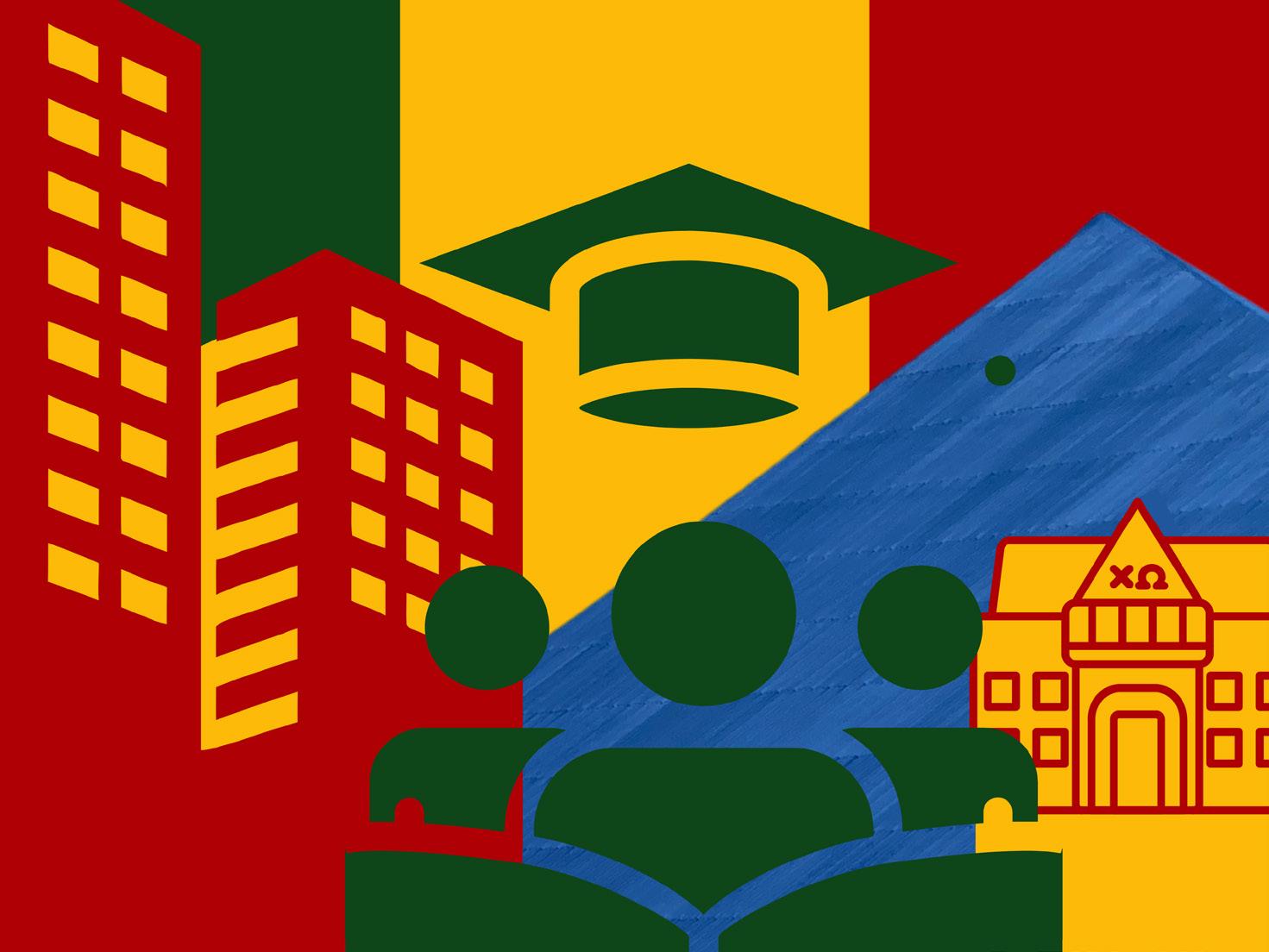
Graphic credit: EL NICKLIN/Long Beach Current Long Beach State has multiple resources, classes and events inside the Black Resource Center.
the importance of using one’s education to improve conditions for African-descendant people worldwide.
BSU is dedicated to connecting and building a strong, supportive community, offering students a safe space to form lasting relationships centered on the liberation and advancement of Black people.
For more information, students can connect with BSU via email at csulb. bsu@gmail.com or follow them on Instagram at @csulb.bsu.
The Black and Pan-African Scholars House offers a residential community for students who are part of, or support, the Black community at Long Beach State.
Designed to foster meaningful connections, the living space encourages discussions on the Black and Pan-African experience, while providing access to mentorship from faculty and staff.
Residents have opportunities to explore their identities, plan and attend events and engage with academic, social, wellness and cultural resources across campus.
The community is housed in Parkside’s H building.
The Men’s Success Initiative at CSULB supports and empowers men of color by fostering academic achievement, personal growth and a sense of brotherhood.
The program focuses on improving retention and post-graduation success through mentorship, academic advising and culturally-specific workshops.
MSI challenges traditional views on masculinity while creating a supportive community through initiatives like free tutoring, leadership development and partnerships with organizations such as 100 Black Men of Long Beach and the Long Beach Male Summit.
Open to all students, MSI provides opportunities for engagement, advocacy and academic excellence.
Students can connect with the Men’s Success Initiative through program coordinator Noah Gordon at noah.gordon@ csulb.edu or follow updates on Instagram at @csulbmsi.
The Women’s & Gender Equity Center at CSULB provides a space for education, advocacy and community building centered on gender equity and social justice.
Open to students of all identities, the center offers study areas, small group meeting spaces and social activities, along with access to computer stations, refreshments and campus resource referrals.
The center also hosts events aimed at empowerment, including the upcoming “Womxn of Color Leadership Conference” on March 14 at the University Student Union.
The one-day event will feature discussions, workshops and speakers addressing the unique challenges and experiences of women of color, providing tools for leadership development and personal growth.
The Women’s & Gender Equity Center is located in Brotman Hall Room 270 and is open Monday through Friday from 8:00 a.m. to 5:00 p.m. For more information, students can reach the center by phone at (562) 985-8576 or by email at WGEC@csulb.edu.
Other Organizations and Fraternity/ Sorority Groups
• Organizations:
• Africana Studies Student Association
• Black Business Student Association
• Black Campus Ministries
• Black Faculty & Staff Association
• Black Pan-African Graduate Student Association
• Black Law Student Association
• Color Me Queer
• Eritrean Ethiopian Student Association
• National Association of Black Journalists
• National Society of Black Engineers
Nigerian Student Association
• Shining Jewelettez Dance Team
• Sister Friends
• Queen2Queen
Fraternity/Sorority Life:
• Alpha Kappa Alpha Sorority, Inc.
• Alpha Phi Alpha Fraternity, Inc.
• Delta Sigma Theta Sorority, Inc.
• Kappa Alpha Psi Fraternity, Inc.
• National Pan-Hellenic Council
• Omega Psi Phi Fraternity, Inc.
• Sigma Gamma Rho Sorority, Inc.
• Zeta Phi Beta Sorority, Inc.
• Phi Beta Sigma, Fraternity, Inc.
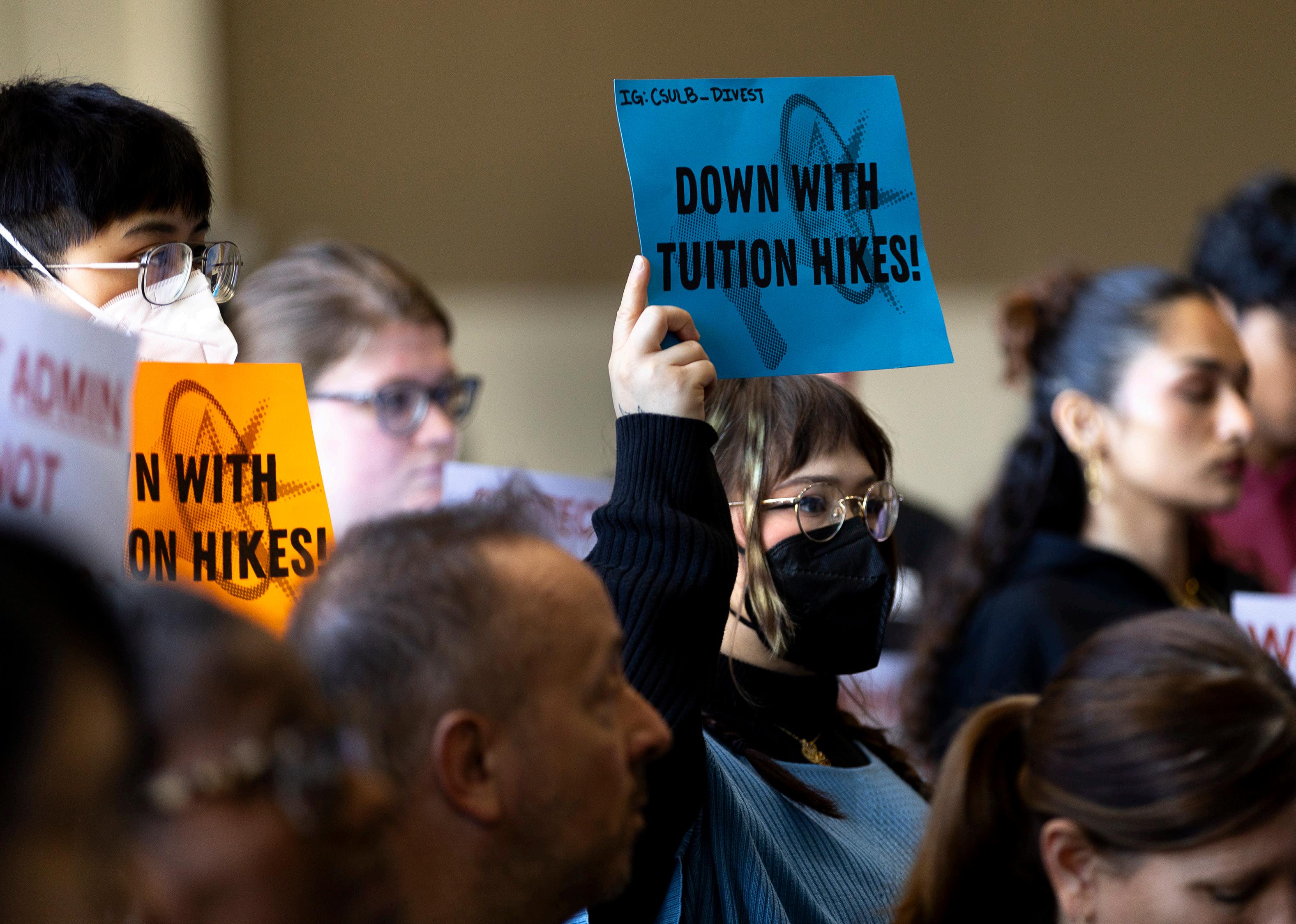
BY JUAN CALVILLO & ANNETTE QUIJADA News Editor & News Assistant
Community members, faculty and students shared their perspectives on topics ranging from funding for mental health to faculty recognition and representation issues with the California State University’s presidential advisory committee during an open forum on Wednesday, Feb. 19, at Long Beach State.
Student mental health was one of the topics highlighted by both students and faculty during the two-hour meeting. In October 2024, the Current reported high staff turnover at CSULB’s Counseling and Psychological Services.
Lily House-Peters, associate professor in the department of geography, said the next president needs to be committed to improving mental health care for students.
“We need a fully funded CAPS. We need more counselors, we need more counselors hired and we need those counselors to be hired in permanent tenure track positions,” House-Peters said.
According to CSU regulations, each campus should have one full-time mental health counselor for every 1,500 students. CAPS currently has 13 counselors. The CSULB campus has an estimated 39,000 students enrolled. To comply with regulations, the campus should have at least 26 counselors.
Both students and faculty called for support of the Latino community on campus, some citing the number of Latino people on campus and in Long Beach.
Based on CSULB’s institutional demographics data from 2023 for undergraduate ethnicities, Latino/Hispanic students make up 49.6% of students. Census data from
2020 shows Long Beach’s Hispanic/Latino population at 43.4%.
CSULB’s Latinx Student Union President, Citlali Sedeno, said students on campus need a president who values students’ cultures and listens to and acts upon student needs.
She gave an action list focusing on additional funding for mental health services and cultural resource centers.
“It means actively uplifting diverse communities, listening to students’ concerns and ensuring that policies reflect our [student] needs,” Sedeno said.
She said the next president should value representation as well.
CSULB alum David Salazar said the new president should have a deeper understanding of the local and regional community.
Salazar said the president should engage with Long Beach’s large Latino population and amplify the university’s Hispanic-serving institution.

Clockwise from left: Long Beach State students held signs saying, “down with the tuition hikes” during the Presidential Open Forum on Feb. 19, where students and faculty had a chance to talk to the Presidential board. Faculty from different departments as well as members of the California Faculty Association showed up to the Presidential Open Forum at Long Beach State to explain what they’re looking for in a CSULB president at the USU ballrooms. Chancellor of the CSU system Dr. Mildred García attended the Presidential Open Forum.
Photos by SAMUEL CHACKO
Long Beach Current
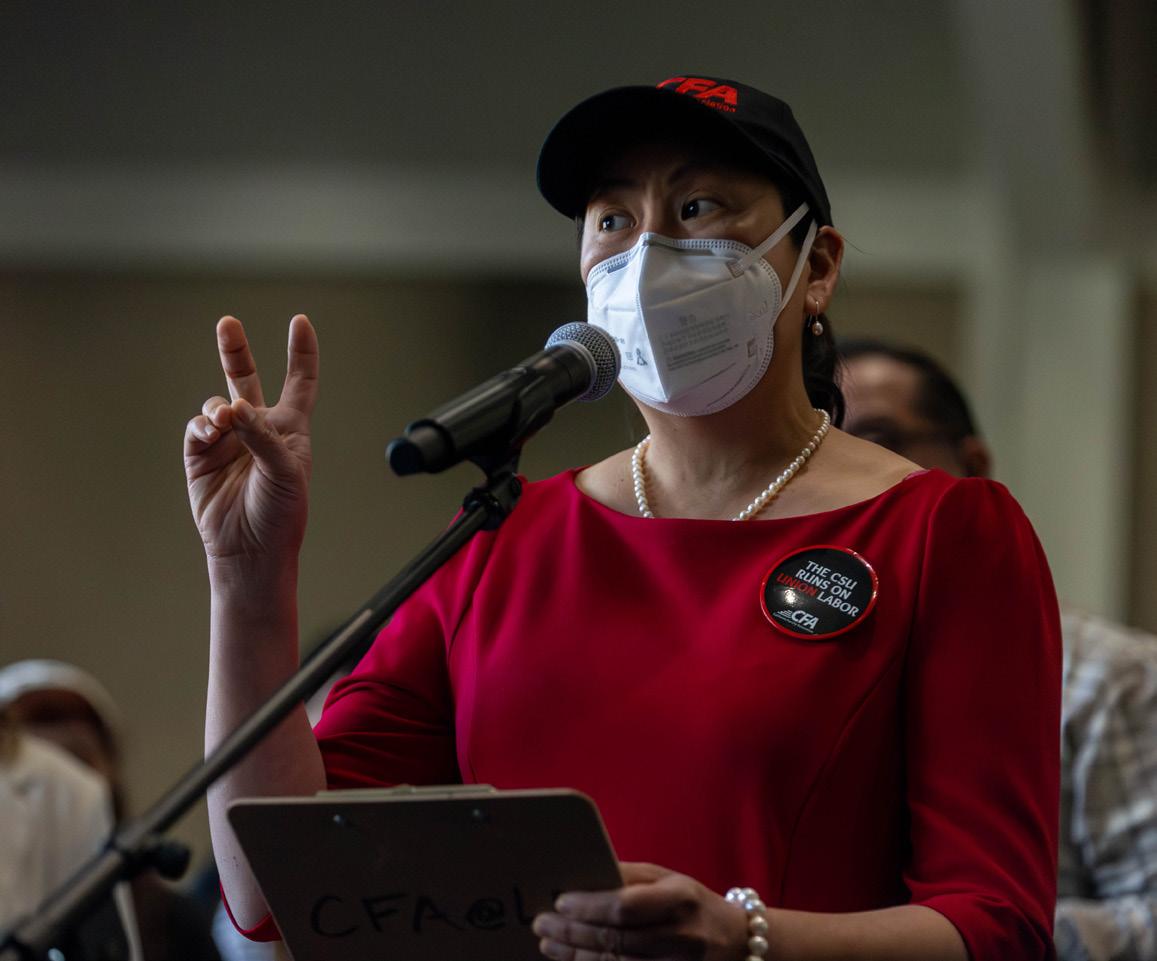

“This engagement and recognition has been sorely lacking in the past, and it is also critical to have a university administration and faculty that are proportionally reflective of this demographic,” Salazar said.
Claire Garrido-Ortega, co-president of the California Faculty Association and lecturer in health science at CSULB, said that lecturer faculty teach a large part of the classes on campus and create bonds with many students.
However, these lecturers are not treated equally in terms of compensation, fellow professor recognition and working conditions.
She said there is a need to recognize the work lecturers do and the mentorship they share with students.
“I urge this committee to select a president with a proven track record of supporting all faculty, including counselors, coaches and librarians,” Garrido-Ortega said. “Choose a leader who will transform CSULB’s values from aspirational statements into reality for all of us.”
A member of Students for Quality Education, who
gave their name at the forum, said CSULB needs increased transparency regarding how tuition is used and how money is invested on campus.
The student also mentioned faculty concern surrounding CSULB’s connections with businesses like Boeing.
At the end of his time, the student asked the audience, “Whose university is this?” to which audience members responded, “Our university.”
The forum, the only one announced at the time of this writing, had participants from the California Faculty Association, Students for Quality Education, Latinx Student Union, La F.U.E.R.Z.A and both Long Beach community members and Indigenous tribe members on hand to address the committee on the search for the next university president.
Chancellor Mildred Garcia said the presidential search– although not a secret– will remain confidential.
In an email statement sent to the Long Beach Current, Kelly Hazel, media relations and public affairs manager
for the CSU Chancellor’s Office, said the presidential search process will be conducted by two committees: the Trustees Committee for the selection of the president, and the Advisory Committee to the Trustees Committee.
“The recruitment, selection and appointment of CSU presidents is one of the most important responsibilities of the CSU Board of Trustees,” Hazel said.
According to Hazel, the Trustees Committee will oversee the entire search process and will make a final decision on the candidate who advances to the CSU Board of Trustees.
The Advisory Committee consists of students, alumni, faculty and staff members who participate in the search process, including the choices for finalists.
CSU Trustee Christopher Steinhauser said people can provide nominations for the next CSULB president by emailing presidentsearch@calstate.edu.
The CSU Board of Trustees are said to appoint the next president during their meeting in July.

‘They didn’t think Black Studies was gonna last,’ the resilient story of CSULB’s Africana Studies department
BY ACSAH LEMMA Editor in Chief
“Abullet can affect one life. A pen and paper can affect a lot of lives.”
The words, said confidently by Rasheed Dupree, reflect a lifetime, from overseas combat in the military to the very halls Long Beach State’s campus.
Formerly known as Sydney Lee, Dupree is the first graduate of CSULB’s Africana Studies department.
In the year 1971, a 24-year-old Dupree had already experienced more than the average college student. Having joined the Marines right after high school, he was sent to Vietnam where he received a purple heart after being shot in combat.
It was on that battlefield where Dupree and his fellow Black soldiers developed what he calls a “consciousness.” This “consciousness” invoked in him a desire to go back to school and learn.
After registering through the Educational Opportunity Program, Dupree signed up for his first Black Studies class titled “Black Man, Mass Media” taught by Professor Amen Rahh.
Rahh was an alum of CSULB, Cal State College at the time.
Graduating from the university in the Spring of 1970 with a degree in sociology, Rahh would return just a few months later in August as the first administrator of the newly-formed Black Studies department.
The creation of his position was the result of a student revolution that elected the Black Student Union President, Tony Wilkinson, to be the chair of the department after the department’s student advisory committee elected a chair that failed to show up.
The administration at the time refused to accept a student as the chair and shut down the department for a summer.
It was Rahh who reached out and became the first “unofficial” chair of the “reconstituted Black Studies department,” he said.
He recounts the department as “student driven, student supported and just growing.”
Amid the aftershock of Martin Luther King Jr.’s assassination in 1968, and the rumblings of revolution, Dupree showed up to every class, hungry for

knowledge.
“I was not trying to be the first to graduate from Black Studies,” Dupree said. “It just happened to be that I always came to my class.”
According to Rahh, in time the name of the department changed from Black Studies to Africana Studies in an effort to develop continuity among other related departments across universities nationwide.
Things never came easy to the department, however - its creation came as a result of a Black cultural movement and student demonstrations led by the BSU of that time.
Once the department leadership was deemed legitimate through the institution of Rahh, they started offering a certificate. Though a bachelor’s curriculum was created in 1972, it wasn’t approved until four years later in 1976.
Relegated to the back rooms behind the Art department, it wasn’t until years later that the department was moved to the location of the Psychology building where it lives on today.
But it didn’t stop there.
Rahh recalls a time when the History department offered an African Studies course despite his department already offering one.
“You’re not supposed to offer classes that the departments had at that time,” Rahh said. “They tried to turn back our academic power.”
Things began to change in 1989 when the university hired activist Maulana Karenga previously known as Ron Karenga to be the chair for the department, where he remains to this day. Karenga is best known for creating the African-American holiday Kwanzaa.
Rahh said that Karenga “organized and crystallized us to be academically
excellent.”
“Empowered,” Dupree said. That’s how he described the feeling of being a student of the then-Black Studies department.
Dupree attributes his successful education not only to his desire to learn but to Rahh, who always stressed academic excellence.
Now age 78, Dupree calls Rahh his brother.
For Dupree it’s hard to put into words “the impact that Amen has on so many of us as students and how he has shaped our lives in terms of Black Studies and being conscientious of who we are and why we are here.”
To him, Rahh taught him the power of knowledge.
“Now, I have learned how to take a pen and put it on paper, and I can kill a lot of people with that pen and paper,” he said.

BY LINSEY TOWLES Managing Editor
It is 1956 in Chicago and 9-yearold Lawrence Fortenberry is at his grandfather’s feet.
In one hand is his grandfather’s large leather-bound dictionary used to write weekly sermons, and in the other is a pencil Fortenberry used to scribble on its pages.
“My mother had a fit,” Fortenberry said. “She said, ‘Daddy needs that for work.’ And my grandfather said, ‘Leave the boy. Maybe he’s going to be a writer one day.’”
At 77 years old, Fortenberry has an expansive portfolio of writing featured in publications including the Los Angeles Sentinel, Muhammad Speaks and the Wave local newspapers.
While that early memory of his grandfather planted the seed of a writer’s life, it is his time at Long Beach State that allowed the dream to grow.
Fortenberry’s first experience at The Beach was in the late 1960s when he enrolled as an Educational Opportunity Program student at the age of 23.
Older than the other students, and with a wife and child, Fortenberry was unsure of what he wanted to pursue.
“At that time, I knew I wanted an education. But I didn’t know what direction to go in,” he said. “Someone gave me advice to wait until junior year. Get through the basics, then determine what you want to major in.”
Fortenberry credits his introduction to journalism to a language arts class where the instructor assigned him to write about the Black Student Union, which was about five years old at the time.
Impressed by his writing, she directed him to the journalism department where he met Ben Cunningham, the former chairman of the department.
“He was impressed with my writing and my wife and I left that meeting with him with an armload of books,” Fortenberry said. “I had found my passion.”
Despite praise from his instructors, Fortenberry describes being unsure about his writing until being published in a journal called Black Scholars at the suggestion of a professor.
“One of our assignments was to write a paper. I wrote about the first
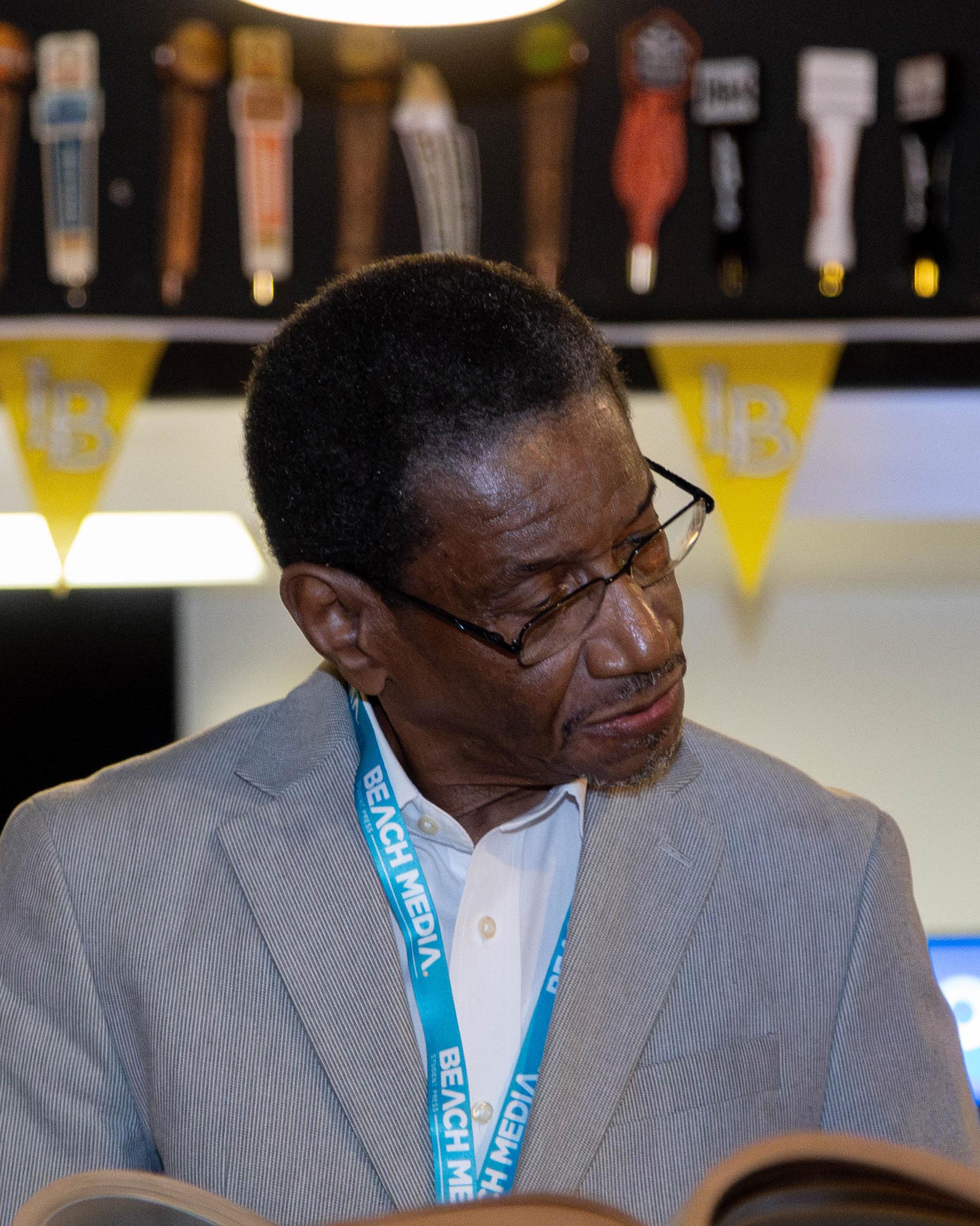
”
The language was revolution. If you weren’t talking revolution, we weren’t talking to you.
Lawrence Fortenberry Long Beach State alum
Black newspaper called Freedom’s Journal. The professor was impressed with it and he said you ought to publish this,” Fortenberry said.
That experience gave Fortenberry the confidence and the clippings he needed to pursue jobs in writing.
Fortenberry continued to focus on the BSU, of which he was a member, and Black studies, which he minored in along with his major in journalism.
An adolescence spent reading literary greats James Baldwin, Alex Haley and Malcolm X had inspired “radicalization” in Fortenberry, which he also found in BSU members.
“I said, these are my brothers and sisters, they’re talking the same language,” Fortenberry said. “The language was revolution. If you weren’t talking revolution, we weren’t talking to you.”
According to Fortenberry, it was the work of the early members at Long Beach State’s BSU that paved the way for students like him, fighting for the creation of a Black studies department and opportunities for Black students.
“The BSU had toiled the soil. They were very militant in their early days and had taken over the admin building, stormed into the senate meetings. By the time I came around, people were open to having Black talent,” he said.
Growing up in Los Angeles and graduating from Johnson Freemont High School in 1965, Fortenberry, along with his best friend and “reading soulmate” Melvin X, were witness to what he now knows were turbulent times.
“I look back on my life now and I see that I was in the middle of a lot of stuff,” Fortenberry said. “We were just doing our thing. We were unaware this would have a lasting impact on us and the city and community for years, decades. We just didn’t have any idea.”
Now fully retired from his career with the City of Long Beach Section 8 housing program, Fortenberry has allowed his focus to turn back to writing, contributing pieces to local shows and exhibits. He can also be found on the occasional visit back to campus, admiring the new buildings and green spaces.
Fortenberry hopes to continue writing, working towards the goal of writing about his reading companion Melvin X, co-founder of the BSU at UCLA, and murdered on June 6, 1970.
“I want to write about my friend,” Fortenberry said. “I want to say something about my people.”

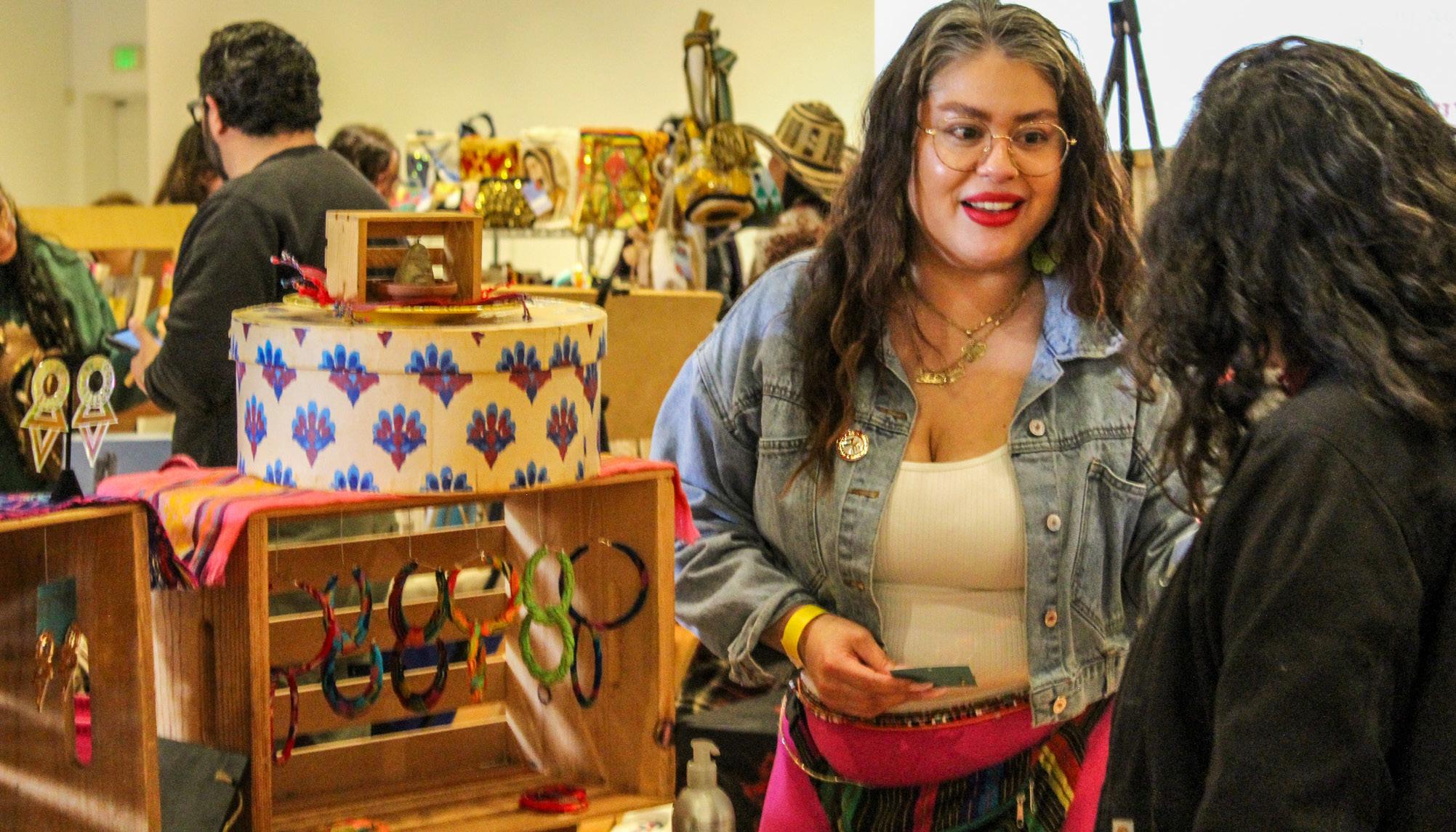
BY DANTE ESTRADA Video Editor
From oil-painted art to dozens of screen paintings, the Museum of Latin American Art united lovers of Afro-Latinx culture on Feb. 16 to celebrate the innovation and activism of prominent creatives.
Hosted throughout the museum and its Sculpture Garden, the celebration featured many artists and performers, including Los Cambalache and Darielle Williams, for their annual Afro-Latinx Festival.
Attendees of this year’s Afro-Latinx Festival dived into the many cultures displayed on numerous artworks.
For over three years, attendees Emilio Venegas Jr. and Nicole Marte have made a point to attend MOLAA’s annual Afro-Latinx Festival.
The two cite their enjoyment
of the museum and how it creates a space for Afro-Latinx artists.
“For them to have this event every year, during Black History Month, to be able to showcase that for Latinos is exciting, especially in southern California, where Afro-Latinos are so scarce,” Marte said. “We don’t really get to see many communities with us. It’s really exciting to see other folks of my background.”
In a sea of several freshly-steamed prints and custom-designed clothing, the artists tabling were eager to bring audiences deep into their vast world of innovation and creatively crafted pieces.
Each artist offered an insight into their artworks as they served as a form of education, resistance and celebration of the Afro-Latinx community.
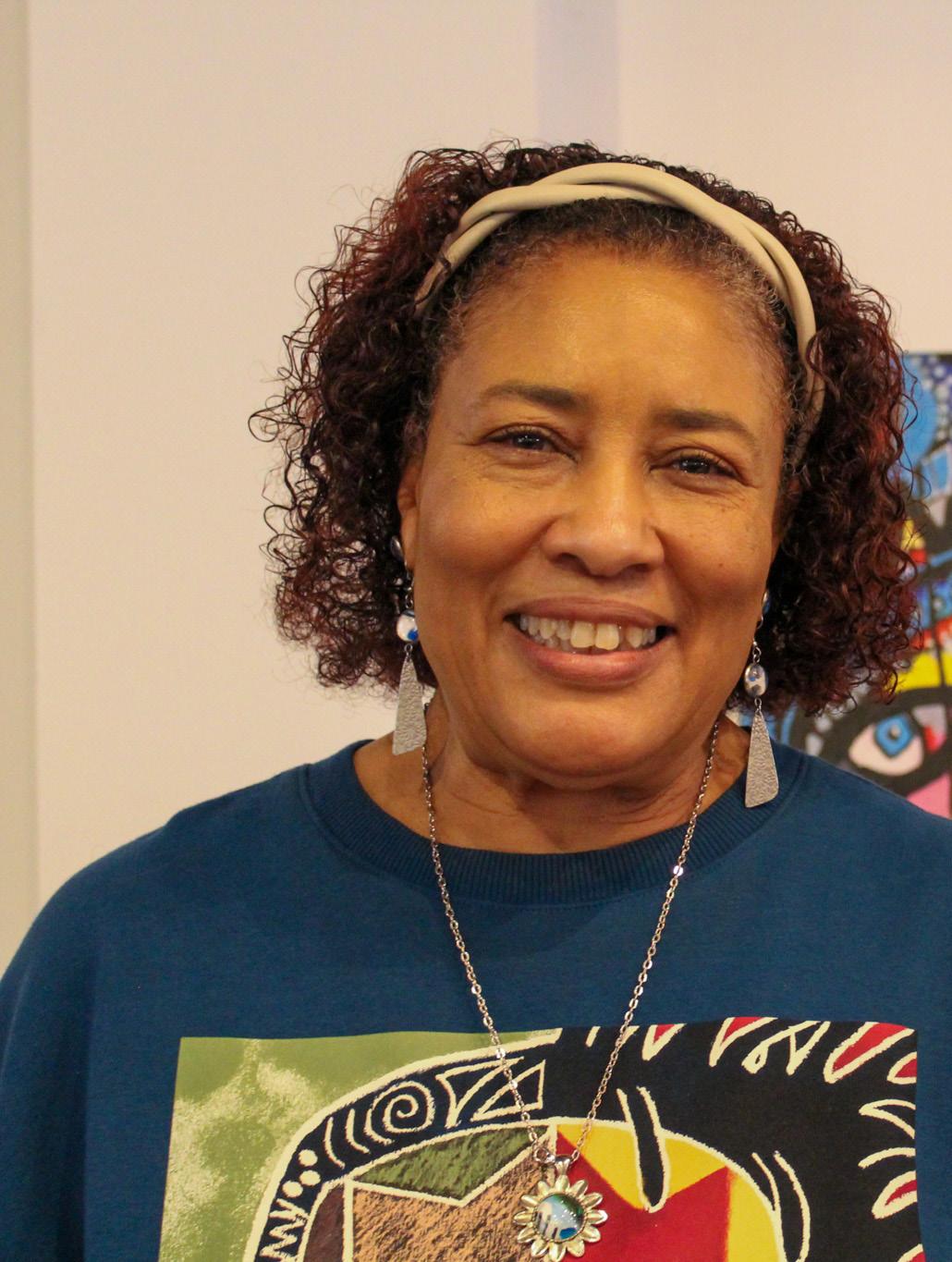
Middle: Judy Perez has been doing abstract painting for over five years while she balances her job as a Transitional Kindergarten teacher. Perez said she expresses her frustrations with current political and global events through paintings of faces and expressions. To Perez, the medium of art is what unites people.
Top left: Julisa Garcia bases many of her handcrafted jewelry off of Coyolxāuhqui, the Aztec moon goddess. In university, Garcia pursued Latin American studies, where she realized she was not well-educated on Aztec history. According to Garcia, learning about Coyolxāuhqui and sharing that knowledge with others is a form of saying, “f— you to white supremacy.”

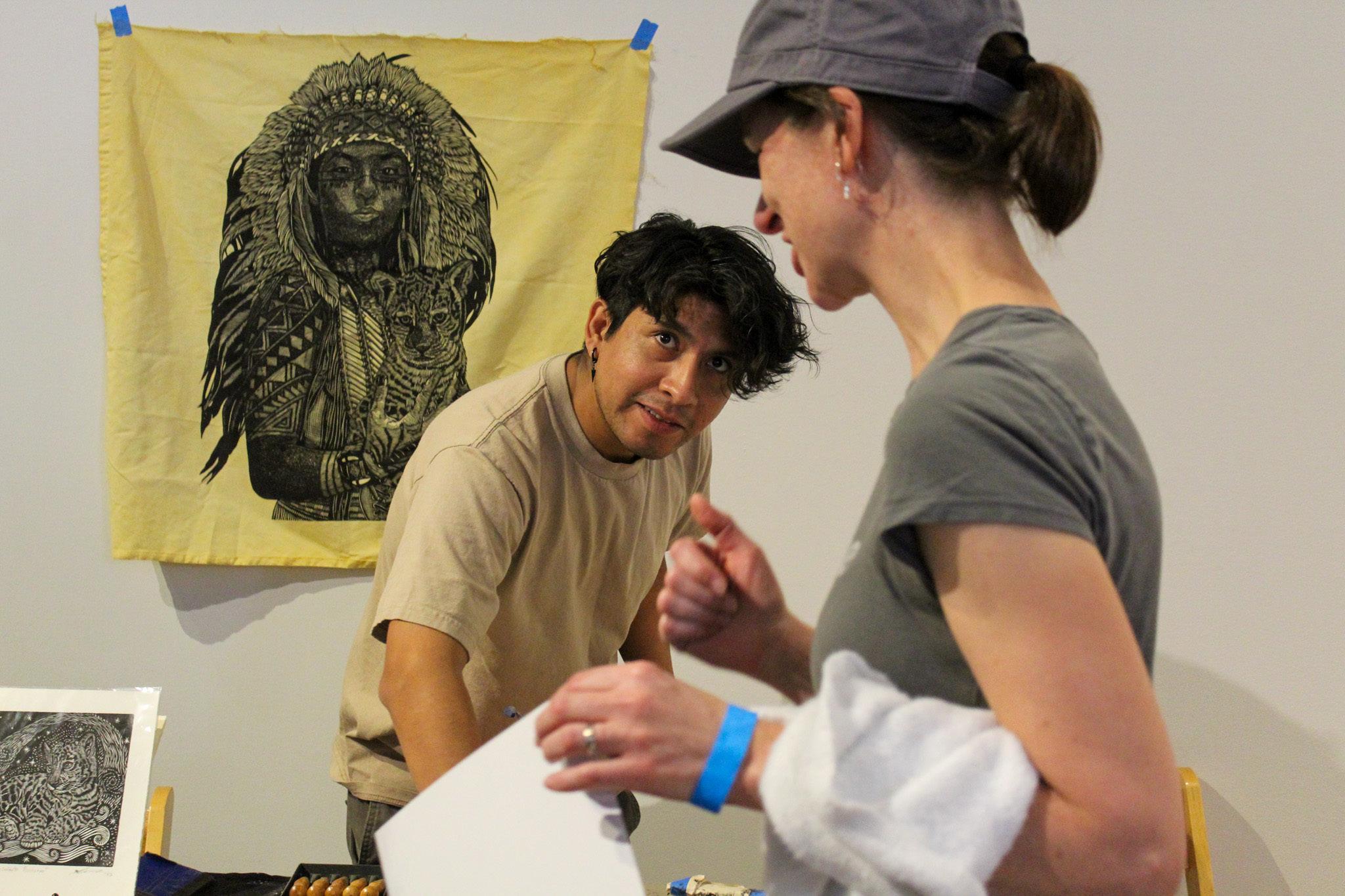
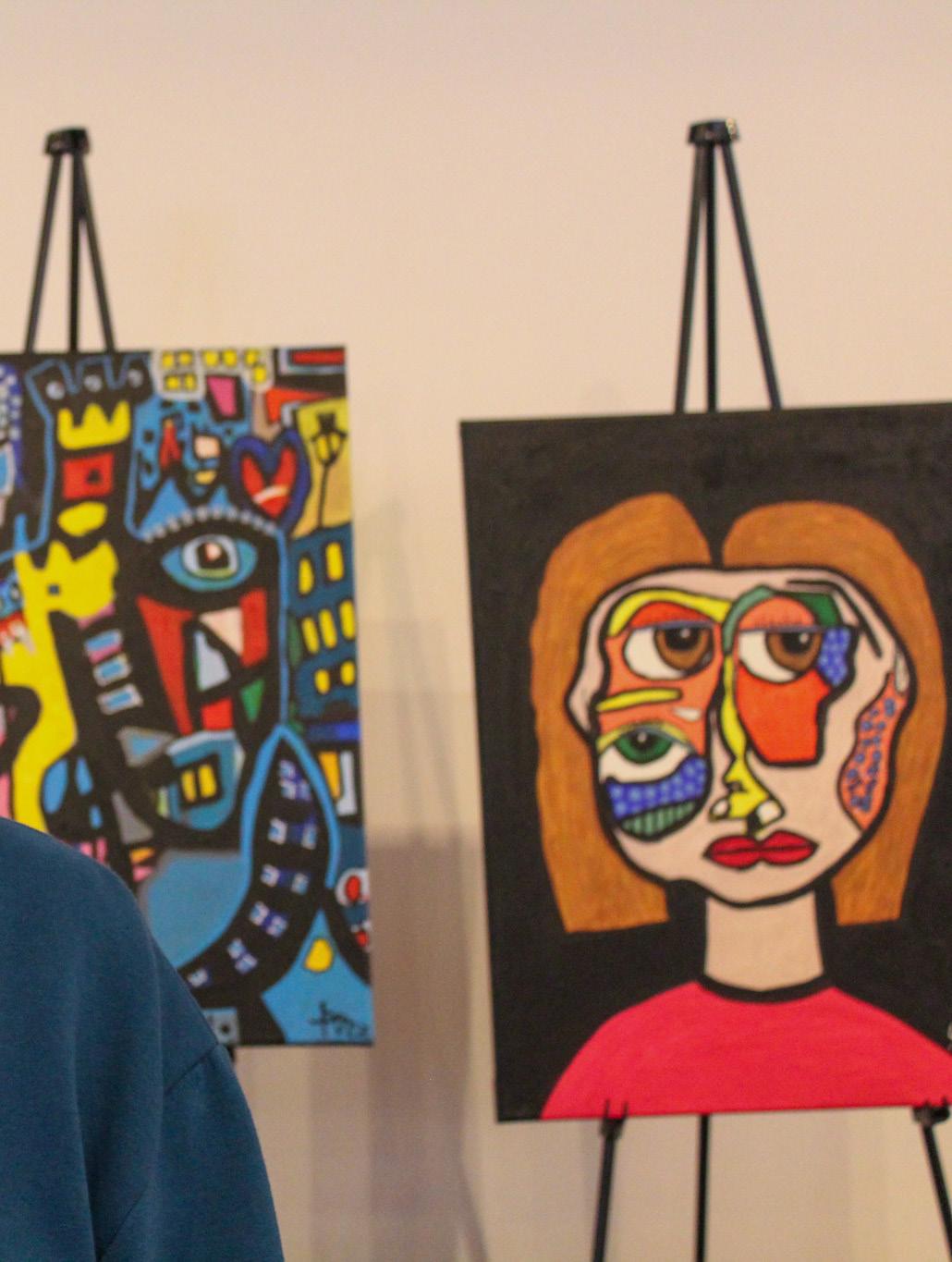
Top right: Cesar Garcia said he had been screen printing for seven years since he first learned in Oaxaca, Mexico. He said he saw printmaking as a tool to protest against political issues. After moving to San Bernardino, he illustrates issues of homelessness in his local community in his artwork.
Bottom right: Jerry Limon, a 51-year-old artist from East Los Angeles, also participated in the festival as a vendor in the screen printing business. For over 30 years, Limon has incorporated elements of Afro-Latinx culture into his own clothing and prints. “The cultures you see represent a lot in my art; Buba, Panama, Puerto Rico, Colombia, they all play tribute back to the African roots of their drumming…with the Spanish and Indigenous bloods to make this beautiful music, culture, dance and history,” Limon said.
Photos by DANTE ESTRADA
Long Beach Current


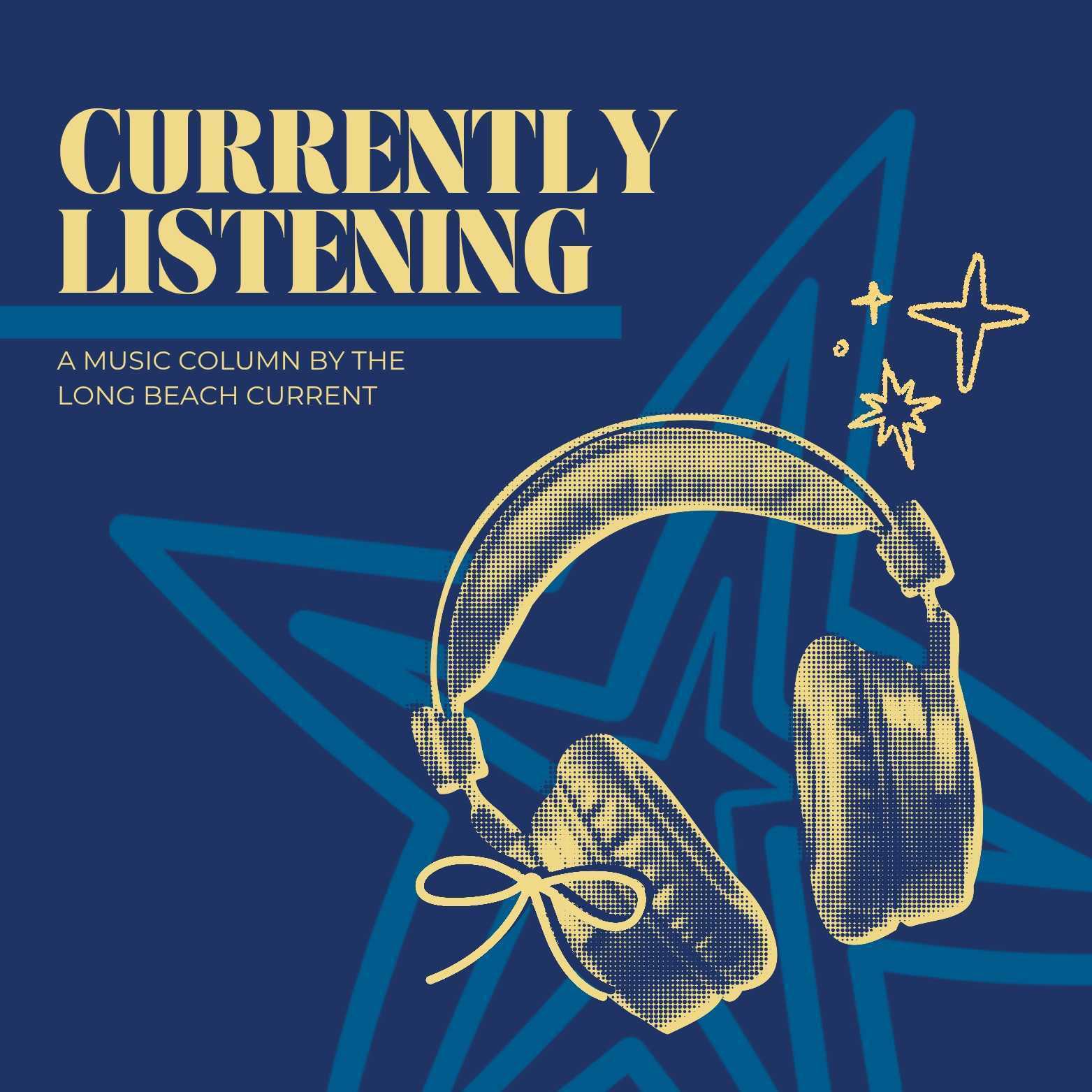
BY JAZMYN DE JESUS Social Media Editor
The irony of the Super Bowl falling on Black History Month has always tickled me, especially in recent years where we’ve seen performers like Beyoncé and Kendrick Lamar very openly express Black pride and pro-Black themes in their performances to a relatively white, American audience.
This year, President Donald Trump was in attendance as Samuel L. Jackson portrayed a dramatized version of Uncle Sam, which was also a play on the Uncle Tom trope.
The meaning behind this seems very intentional and highlights how pandering to a white audience does not accurately represent who we are or honor Black American culture in any way.
Jackson exclaimed that the performance was “Too loud, too reckless, too ghetto!” Which was immediately followed by Lamar performing “Not Like Us” and sending the audience into a frenzy.
Typically, streaming services highlight films, TV shows
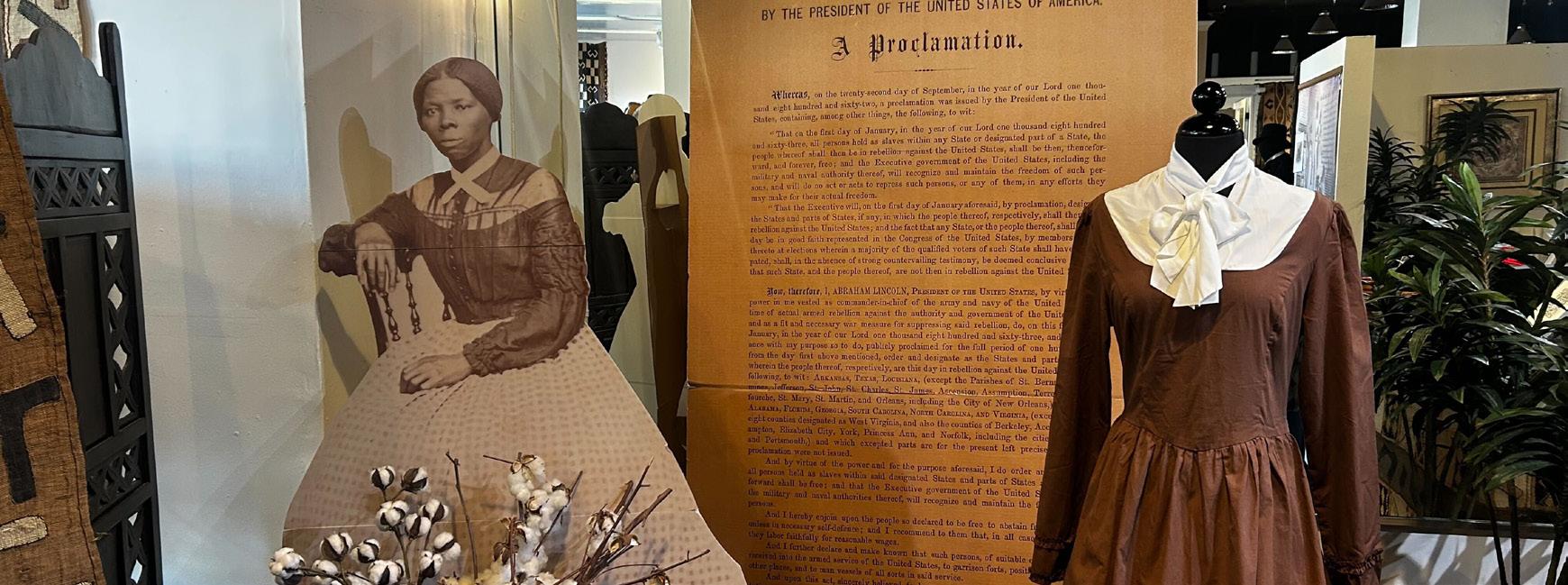
BY JADYN GILES Contributor
Nothing says “Happy Black History Month” like spending Valentine’s Day at a Middle Passage Exhibit. While lovebirds exchanged heartfelt gifts, I exchanged glances with the chains and shackles draped from the walls.
and documentaries that depict tales of Civil Rights and Jim Crow era struggles or harrowing stories about the brutal reality of slavery.
While these pieces of our history are important, we do not often get to see our triumphs and times of joy and valor be celebrated in the media.
This is where the power of music and live performance come into play.
When Beyoncé brought out her dancers dressed as Black Panthers to the 2016 Super Bowl Halftime show and shocked the general public of America, it was not because she was depicting graphic imagery of Black trauma and violence, it is because it showcased a group of people expressing their Black pride and having a good time doing it.
It pointed to how American audiences seem to be more comfortable celebrating our pain, sorrow and episodes of violence during the month dedicated to celebrating our history.
Music plays an extremely important role in allowing Black exuberance to be showcased to the masses in a time where it is seldom seen in other forms of media.
Don’t get me wrong, I understand the importance of teaching and remembering the past, but our history did not stop at suffering. Can’t we save room for Black joy?
Black history is rich, it runs deep. While some parts of it are bloody, countless parts are vibrant and joyous. I used to be a little Black girl at a primarily White institute, sitting through Black History Month lectures about the same people and the same events, all from the same angle.
Why must the stagnancy be played out in exhibits and museums?
My perfect Valentine’s Day was spent at the Long Beach African American Culture Center. As I sit here and preach about how we must move forward, I also acknowledge the organization’s instinct to shape young minds and educate the community.
While it is a good instinct– in attempts to inspire– the concept of the Middle Passage Exhibit resurfaces trauma and buries joy and innovation. It feels like we are stuck in the worst part of the past.
Dear Black community, we need to stop getting lost in the efforts to preserve and instead, we need to navigate the habit of spreading stories that make our youth feel empowered, not hopeless.
Museums that tell traumatic stories of the past strive to keep history from being lost; in return, we are losing sight of the good. Allow me to remind you what Black joy is about.
Black joy is about the freedom to laugh. According to the African American Registry, Clerow “Flip” Wilson Jr. is considered the first Black television comedian. From 1970 to 1974, Wilson hosted his weekly series, “The Flip Wilson Show,” on NBC. Wilson went on to win a Golden
Globe and two Emmy awards.
The Flip Wilson show was the second highest rated show on network television during its first two seasons.
Other comedy icons such as Richard Pryor and Redd Foxx set the scene and broke new ground. Then came modern day comedians, such as Monique Angela Hicks and Janelle James. Hicks made appearances on comedy shows such as “The Parkers” and “Def Comedy Jam”. Showcasing her comedic talents led her to win various awards such as an Oscar, Golden Globe and Academy Award.
James, best known for her role as Ava Coleman on the television series, “Abbott Elementary,” won a Screen Actors Guild Award and a NAACP Image Award.
Laughter transcends boundaries and feeds our joy.
Black joy is about the freedom to create. Lonnie Johnson invented one of the best selling children’s toys, the Super Soaker water gun. Garrett Morgan invented the traffic light.
Lyda D. Newman invented the first hairbrush with synthetic bristles and is the third Black woman to receive a patent, which is a legal document that gives inventors the personal right to make, use and sell their invention.
Black joy is about witnessing Black individuals achieving their goals. It is the celebration of creativity and brilliance. This year, Kendrick Lamar won the most Grammy awards at the 67th annual award ceremony.
Lamar won all of the categories he was nominated for, taking home five Grammys. Beyoncé was the first Black artist to win Best Country Album.
So yes, Black history has had many rocky moments to say the least, but it should not end there. As we reminisce, we also witness greatness happening before us. It is important to maintain balance.
Black joy inspires, supports and uplifts. During our month, the force of Black joy should be so strong that there is nothing left in us to protest. So strong that we have happiness flowing down from our heads to our toes, into those around us.

At CSULB, the Black Resource Center remains hidden in the shadows of campus, reflecting a broader issue of institutional visibility.
BY ROMI MATHEWS Opinions Assistant
Tucked away in the back of campus, down dimly lit halls with no defining markers, lies the Black Resource Center—one of many spaces meant to serve Black students, yet only brought into focus during certain times of the year.
Many Black students are still unaware of the Black resources and organizations on campus because they are tucked away both figuratively and literally.
With Black students making up about 9% of Long Beach State’s population according to campus demographics data from 2023, the issue isn’t just about space—it’s about visibility. Recognition that begins and ends with a calendar month is not enough. Performative gestures will no longer do.
In August 2020, following the rise of the Black Lives Matter movement, CSULB President Jane Close Conoley issued a Diversity, Equity, and Inclusion (DEI) Action Plan, aimed at amplifying Black voices among faculty, staff and students while also expanding equitable opportunities for Black administrators and students on campus.
While a campus commission exists to annually assess and address issues of racism and equity, its impact remains questionable.
The persistent lack of equitable opportunities stems not from a lack of resources, but from administrative inaction, weak institutional connections and a failure to provide genuine, non-performative support for Black organizations and resource centers; barriers that are entirely preventable.
Despite stated commitments, students say visibility remains an ongoing issue. Though the Black Resource Center and other spaces exist, their presence often goes unnoticed, and university support tends to peak in February before

fading into the background.
“What I would like to see on campus is more visibility within the Black community and how expansive it can be,” said Julia Llanos-Bultrón, a first year graduate student. “I would like to see more panel discussions and connections between the student and faculty body, as well as not just a focus on Black identity only and exclusively during Black History Month, which happens to be during the shortest month of the year.”
For many students, this sentiment reflects a larger pattern: institutional support for Black students is largely seasonal, acknowledged when convenient but
lacking consistent, year-round support.
While Black History Month events serve an important purpose, it should not be the only time Black identity, culture and student needs are visibly prioritized on campus, especially on a campus that prides itself on being progressive and incredibly liberal.
The issue goes beyond performative gestures. Visibility means active, continuous conversations and action with Black students and organizations. Consistent outreach, and real investment is needed, not just acknowledgment when it’s convenient for the university’s image or limited to a single month.
The question remains: What steps can CSULB take to ensure these efforts extend beyond February?
And more importantly, how will the administration turn promises of equity into sustained action rather than symbolic recognition?
A suggestion would be to host consistent open forums to bring students, staff and faculty from all walks of life together to foster connection and understanding through chosen topics.
Institutional complacency is a choice, and when inactions such as these become choices, they become intentional manipulation.

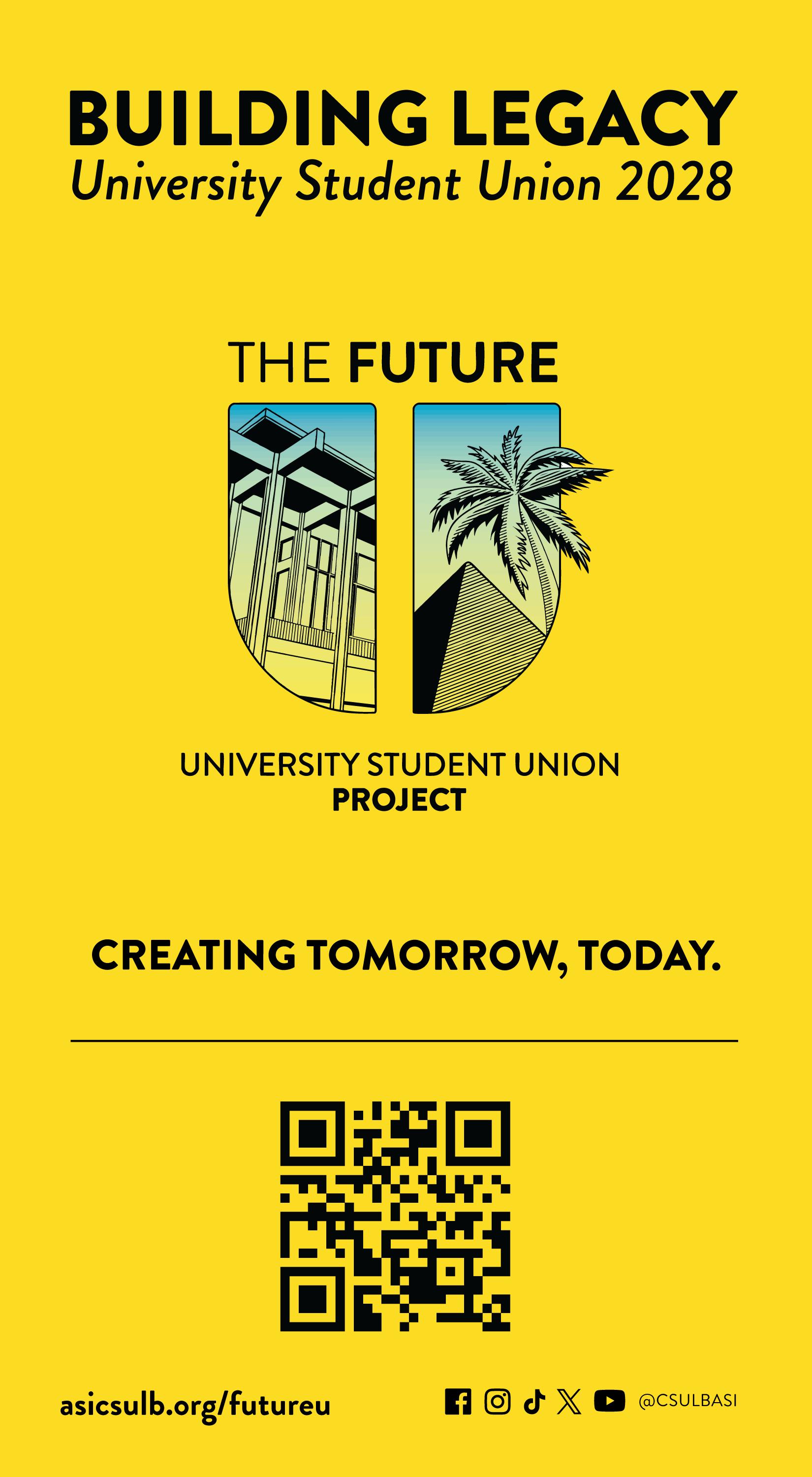


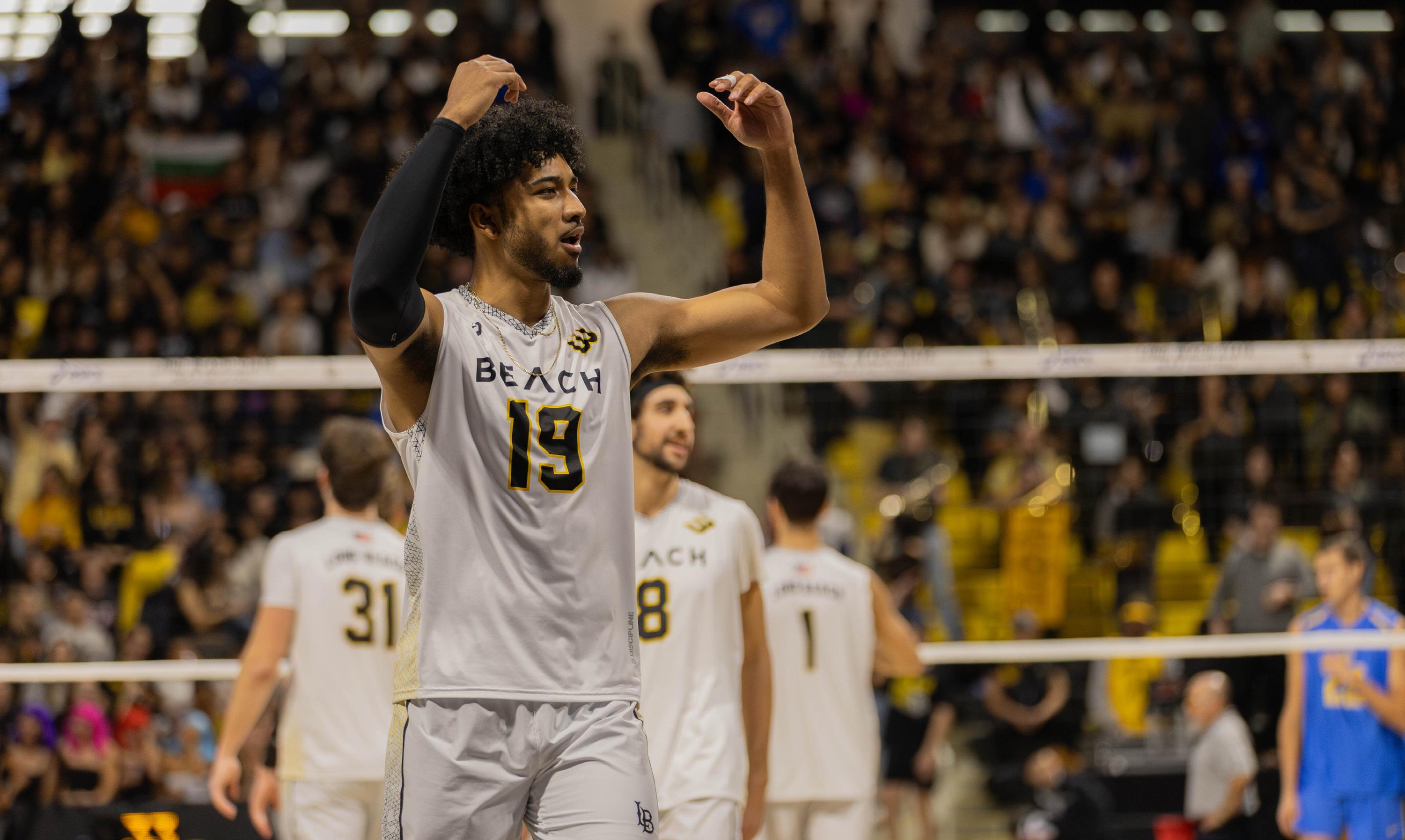
Senior Long Beach State middle blocker DiAeris McRaven keeps The Beach crowd energized as LBSU took down UCLA 3-1.
BY DAVIS RAMAGE Sports Editor
In a predominately white sport, Long Beach State men’s volleyball senior middle blocker DiAeris McRaven is persevering and flourishing for the 11-0 No.1 team in the nation.
“Even in a predominately white sport, you can still find a way to be excellent and be great in it,” McRaven said.
Being 6-foot-5 and Black, McRaven often gets asked, “Why aren’t you playing basketball? There’s so much money in basketball.”
Getting asked those questions, McRaven says, is the hardest thing about being a Black volleyball player.
He realizes that the Black athletes who came before him have been through “10 times worse” than he has, and takes Black History Month as a time to reflect and look at all the people who paved the way for him.
A former high school basketball play -
er, the thought of financials often enters McRaven’s mind when he asks himself why he chose volleyball over basketball, as basketball players get paid significantly more.
Regardless of the financials, McRaven says he is happier playing volleyball than basketball and likes to make his mother proud, who played for the women’s volleyball junior national team in Japan.
McRaven grew up in Honolulu, Hawai’i, where he had a “diverse upbringing” around many different races.
“I found my own way to kind of code switch and you know figure out how to sort of mesh with my group and try to fit in,” McRaven said. “Although it does come with its challenges, you know I always try to find a way around it.”
He started his collegiate volleyball career at Orange Coast College, a junior college in Orange County, Calif.
“The [junior college] route definitely broke me down and made me see who I really was, made me really reflect but it also gave me a strong work ethic, because going through that route you ei-
ther want it or you don’t,” McRaven said.
JUCO is famously known as the level where athletes realize how much they love the sport as it is a slow grind with little recognition for the majority of athletes, but McRaven stuck it out because he knew the potential that he had.
At OCC, the high leaper McRaven played opposite hitter, but has since made the transition to middle blocker for The Beach.
It was different for him to not only be playing a new position, but playing a new position at a higher level of volleyball where the game moves faster and the players on the other side of the net are bigger, stronger and more athletic.
After his time at LBSU is over, McRaven hopes to play professionally, preferably in Japan, but will take any opportunity he can get to play volleyball at the professional level. He hopes that leads to a spot on the United States Olympic roster.
He represented the U.S. at the North, Central America and Caribbean Volleyball Confederation Men’s Final 6 in 2024,
and won a gold medal while being named the best blocker of the tournament.
“It’s a different feeling,” McRaven said. “You know, coming into the gym you already know you’re playing a different style of volleyball and you’re playing for a much bigger meaning than you know just playing for the school, you’re representing your country.”
In terms of role models, McRaven takes inspiration from the work ethic of former and current NBA players like LeBron James, the late Kobe Bryant and Michael Jordan, three legends of basketball who are all known for their devotion to their sport.
Despite differences in skin color and a disadvantage in experience due to his late start in playing volleyball, McRaven has put in a tremendous amount of work to put himself in the position he is today, as a pivotal player for the nation’s best team.
“If I can do it, you can too,” McRaven said.
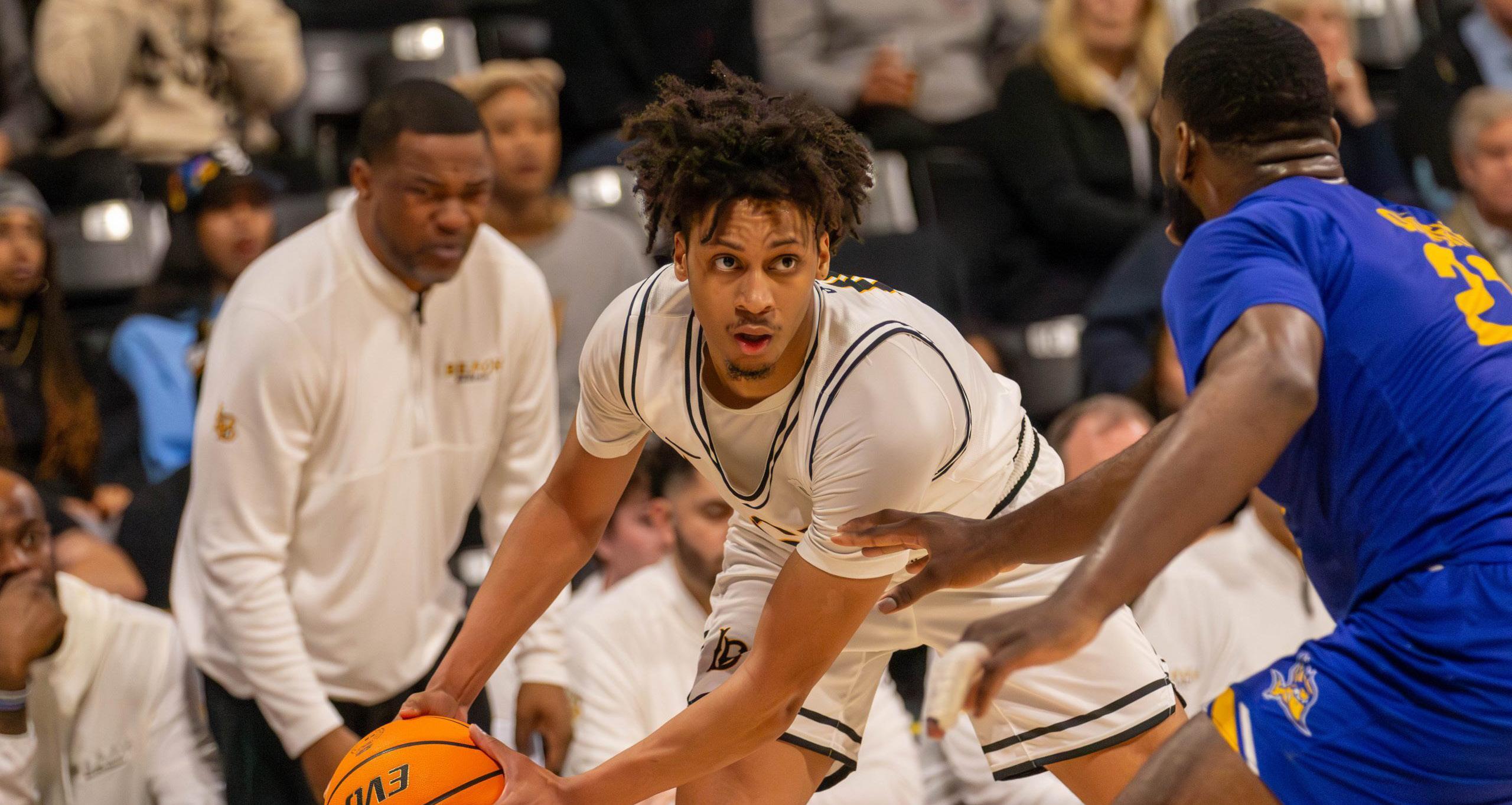
Then-sophomore guard AJ George faces up on a CSU Bakersfield defender on Feb. 23, 2024. George has since transferred to Southern Methodist University where he is getting limited minutes.
BY DAVIS RAMAGE Sports Editor
Following the departure of then LBSU men’s basketball head coach Dan Monson, five players who made up 70 of The Beach’s points per game in the 2023-2024 season entered the transfer portal and landed at schools around the country.
Monson accrued 272 wins in his 17 years at the helm of the program before parting ways leading up to the Big West Tournament where, against all odds, Monson and The Beach won the tournament and booked a spot in the NCAA Tournament in Salt Lake City, Utah.
The Beach were eliminated 85-65 in the first round by the Arizona Wildcats, ending the Cinderella run that no one saw coming.
Following this run came the flurry of players entering the transfer portal
as the coach they were recruited by and playing for was no longer with the program.
Aboubacar Traore, University of Louisville
The then-junior forward averaged 12 points per game and 8.4 rebounds per game in his last year for The Beach. His hustle on both sides of the ball played a massive role in The Beach’s end of the season run.
At Louisville, he is averaging 5.6 points and 4.9 rebounds in limited minutes on a team that is in the midst of an NCAA Tournament push.
Lassina Traore, Xavier University
In his last season at The Beach, Traore averaged a double-double, putting up 11.9 points and 10.3 rebounds per game as the man in the middle.
While practicing at Xavier, Traore suffered a knee injury in October that turned out to be season-ending, so he has not seen the court for the Muske-
teers.
AJ George, Southern Methodist University
The then-sophomore guard looked to be a promising player for years to come for The Beach before transferring as he averaged 10.6 points and 4.1 rebounds last season.
George has since moved on to SMU where he has played sparingly as the deep Mustang roster finds themselves on the bubble of the NCAA Tournament.
Jadon Jones, University of Oklahoma
The sharpshooting then-junior guard played a role at The Beach since his freshman year where he averaged 8.4 points per game on 44.4% shooting from the three.
He improved his points per game to 12.1 in his last season at The Beach and was a leader in the locker room during the tough time after the Monson news came out.
He has been dealing with back inju-
ries at Oklahoma that have kept him off the court this season for an Oklahoma team that has been hot and cold in the toughest conference in college basketball, the Southeastern Conference.
Maddux Monson, Eastern Washington University
Monson, the son of Dan Monson and then-sophomore guard didn’t get much playing time for The Beach as he only checked in the game in blowout situations.
He followed his father to Eastern Washington and has yet to see the court for the Eagles.
The Beach were forced to rebuild with current head coach Chris Acker taking over the program and have struggled to this point with a 7-20 overall record and a 3-12 conference record.
It will be a process to get the program back to the NCAA Tournament and with the state of college basketball, the transfer portal can dismantle a team at any point just like it did to LBSU.









$5 off @ Nugget Grill & Pub!*
Every Wednesday in February 2025, Members who use their LBS Financial Credit Union debit card for purchases of $5 or more will receive $5 off.
Scan the QR Code to join online or visit us on the second floor of the Beach Shops Bookstore. New Members can receive $50 to Beach Shops when opening a checking account and using the promo code BEACH2025!**

*Minimum purchase of $5 or more at the Nugget Grill and Pub at CSULB. Offer good on the following dates in February 2025: 2/5/25, 2/12/25, 2/19/25 and 2/26/25 for LBS Financial Members who pay using their LBS Financial debit card (any card design). One purchase per day, per Member. Cannot be combined with any other discounts or promotions. Promotion excludes alcohol purchases.
**To receive a $50 Gift Card to Beach Shops there’s a $1 fee per new Member plus $5 minimum savings balance to maintain Member account. Must be a new Member to the Credit Union. $50 gift card will be emailed 45 days following account opening. Must use promo code online or open at an LBS Financial Branch with promo code. Account must be open and in good standing to receive gift card.


